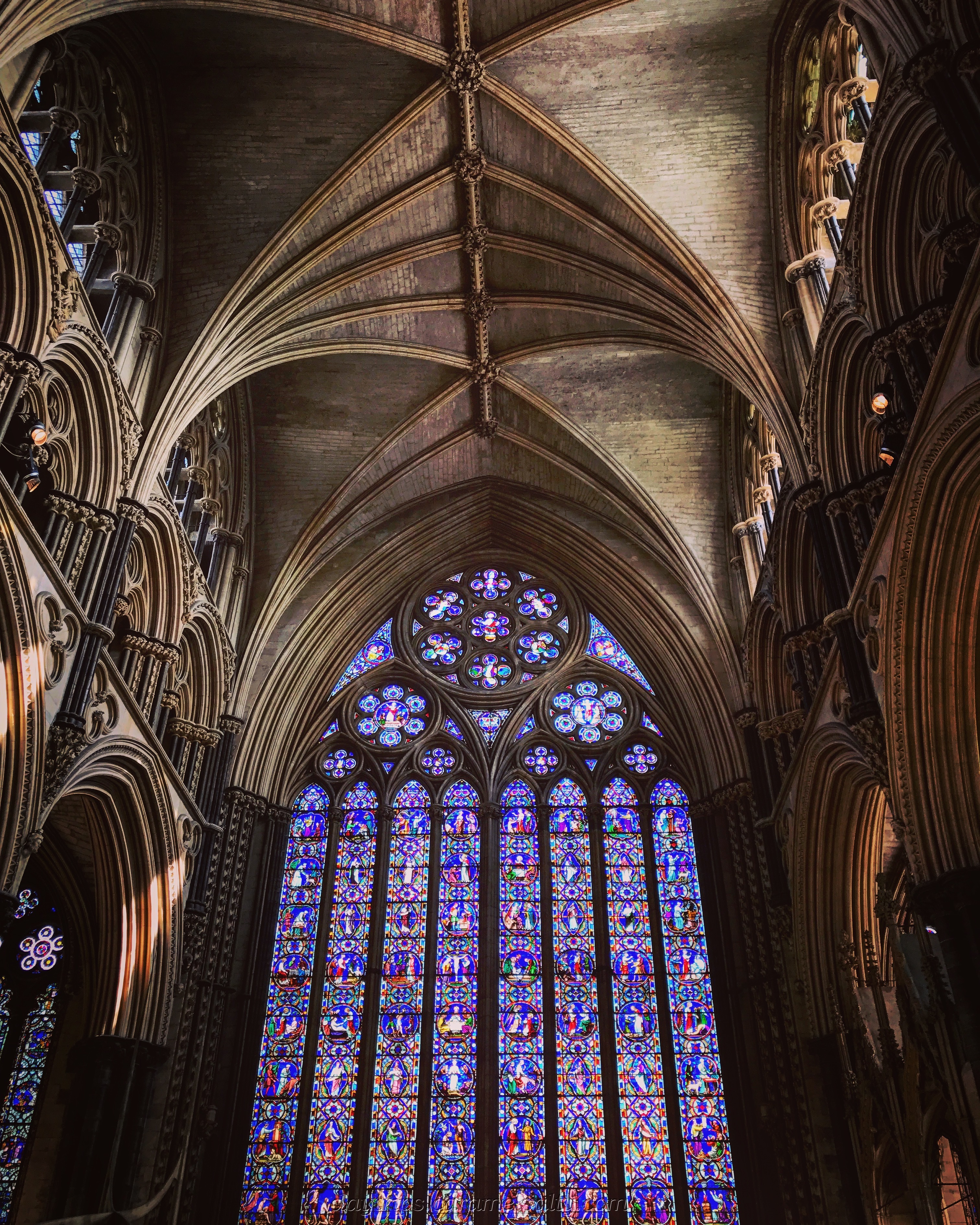
LINCOLN CITY
As I had a weekend work reunion in Doncaster, I decided to extend the weekend as a tourist in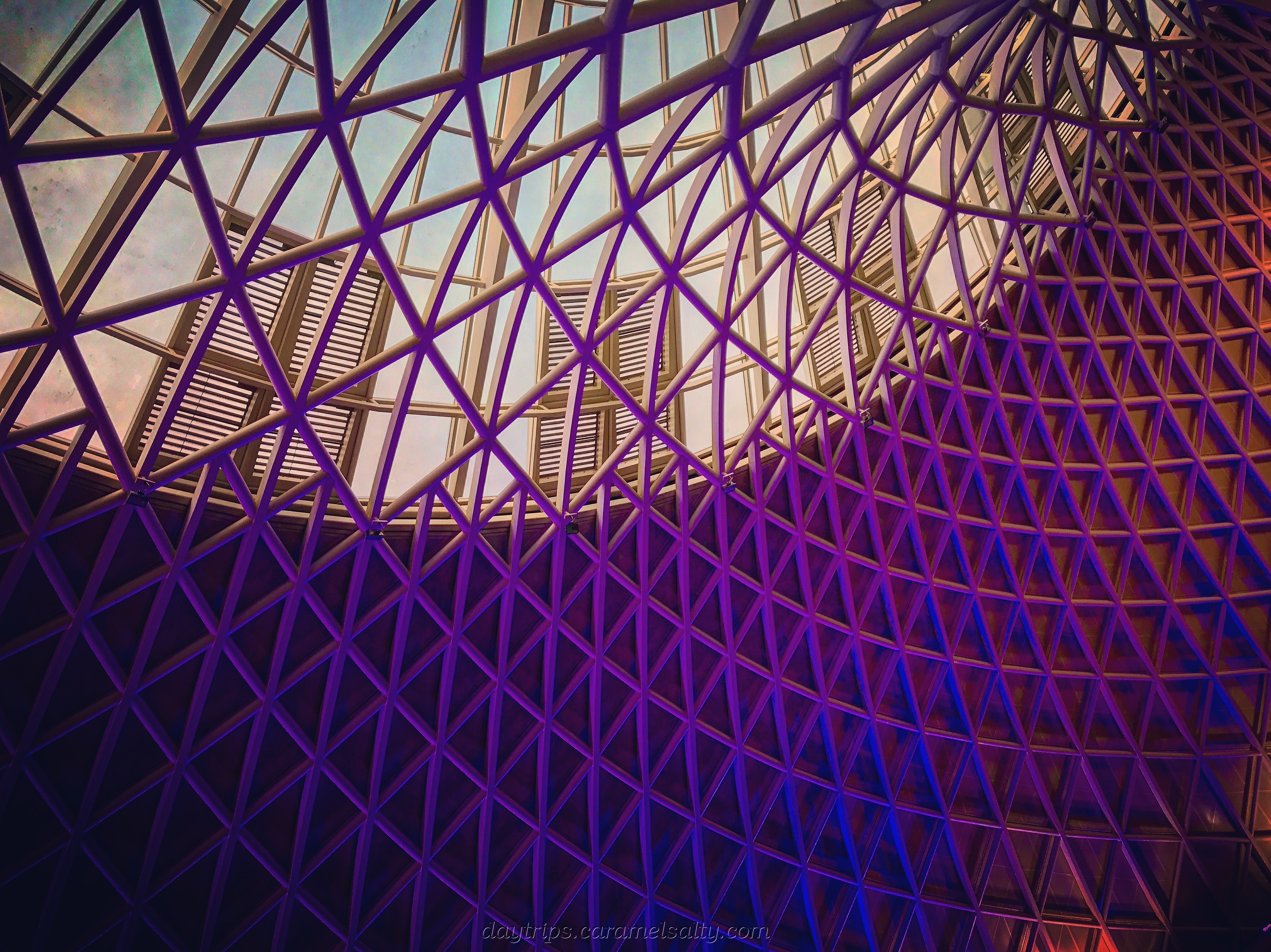 Lincolnshire. And so I pick Lincoln, because of its history and famed cathedral.
Lincolnshire. And so I pick Lincoln, because of its history and famed cathedral.
I start my trip at King’s Cross Station to Lincoln via Newgate Cross, having purchased my ticket on Trainline. 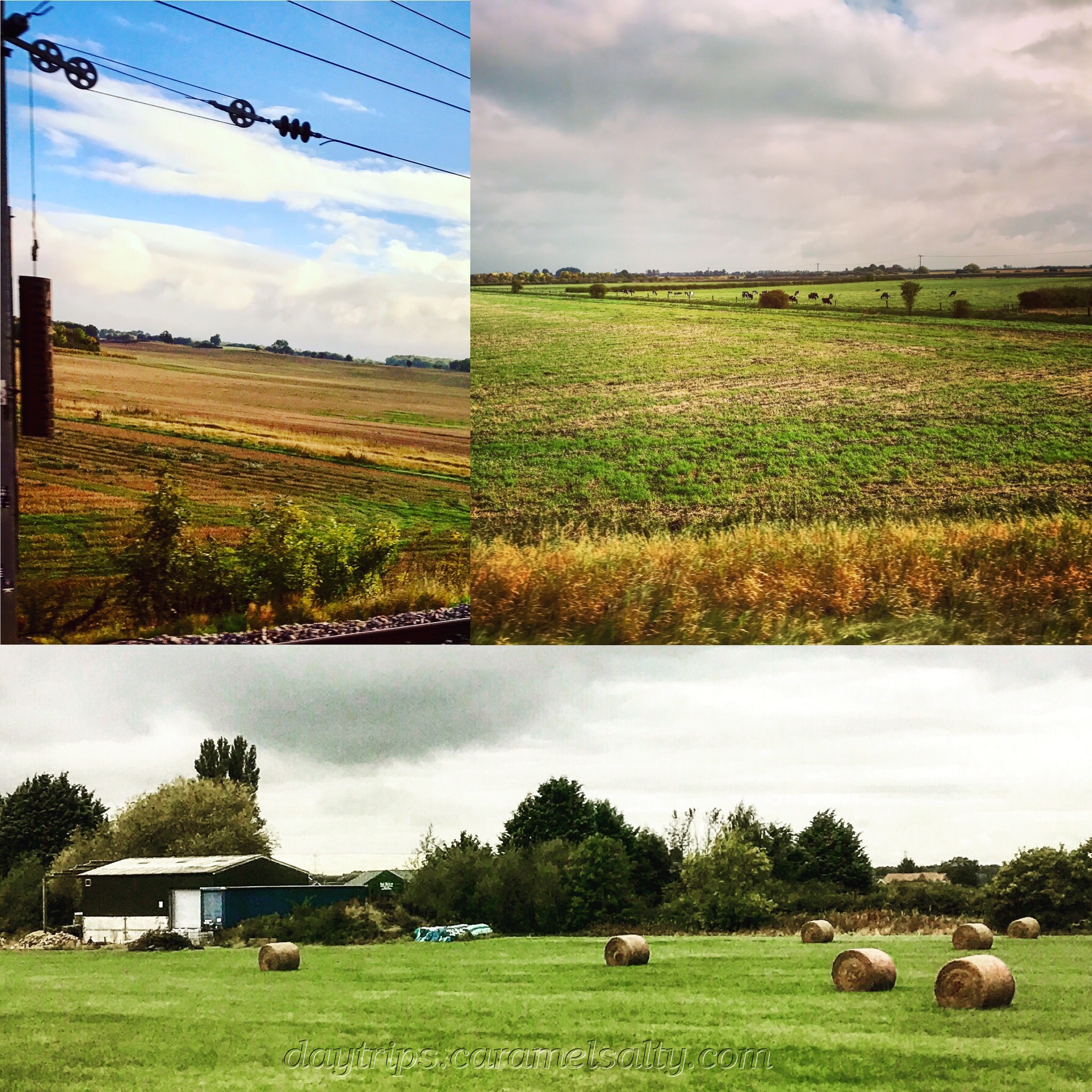 I’m on the 08:30 to Newcastle. Although it’s a fairly flat landscape along the East coast Line, at this time of the year (September) it is dotted with autu
I’m on the 08:30 to Newcastle. Although it’s a fairly flat landscape along the East coast Line, at this time of the year (September) it is dotted with autu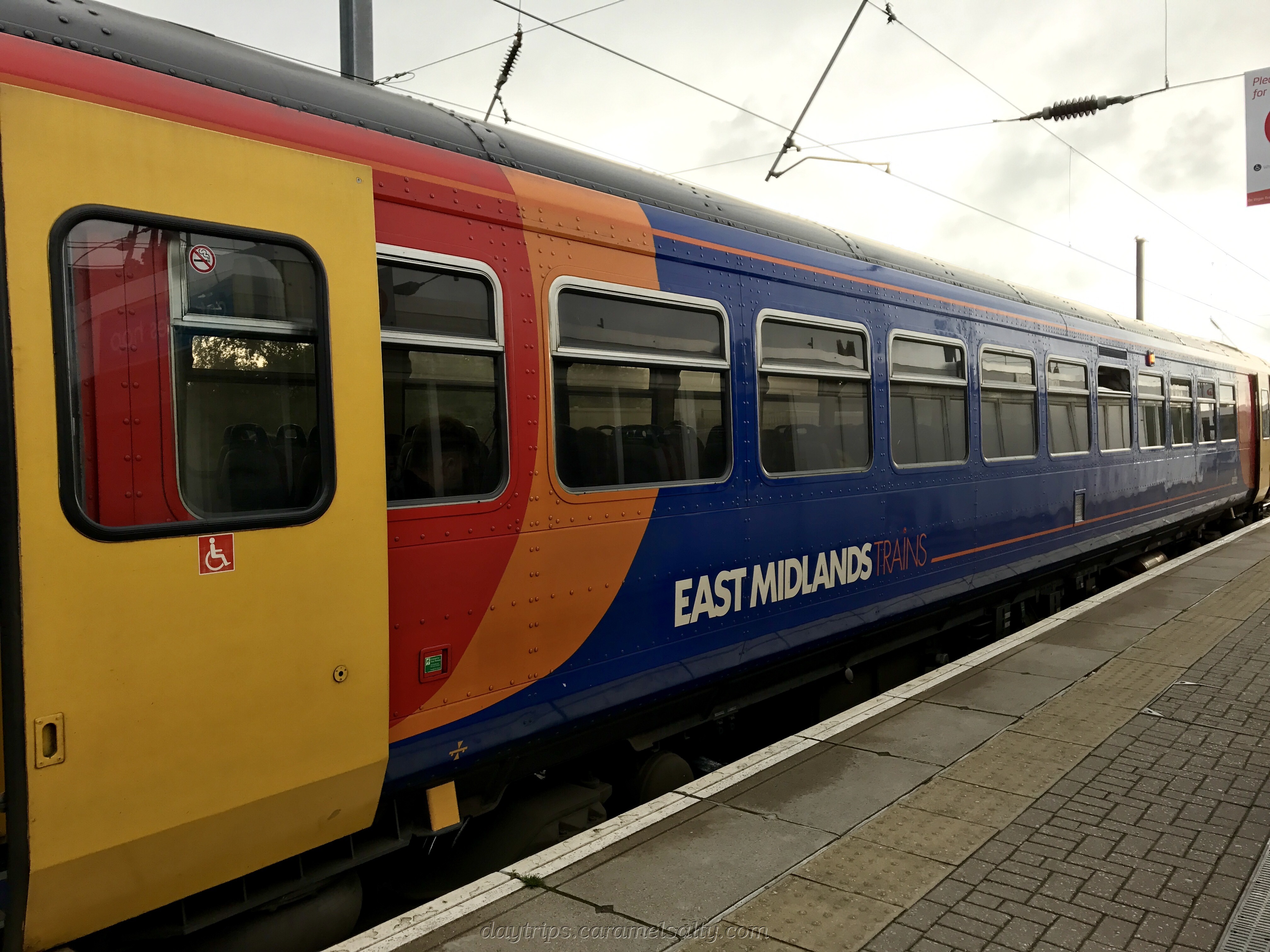 mnal colours and hay stacks on farms. Look out for the pretty centre of Peterborough en route. When I get to Newgate Cross, I board my first ever single carriage train that slowly makes its way across to Lincoln.
mnal colours and hay stacks on farms. Look out for the pretty centre of Peterborough en route. When I get to Newgate Cross, I board my first ever single carriage train that slowly makes its way across to Lincoln.
I arrive in Lincoln by 10:30. As it’s too early for checking into my hotel, I decide to take in the sights as I and my overnight bag meander our way to the hotel, 
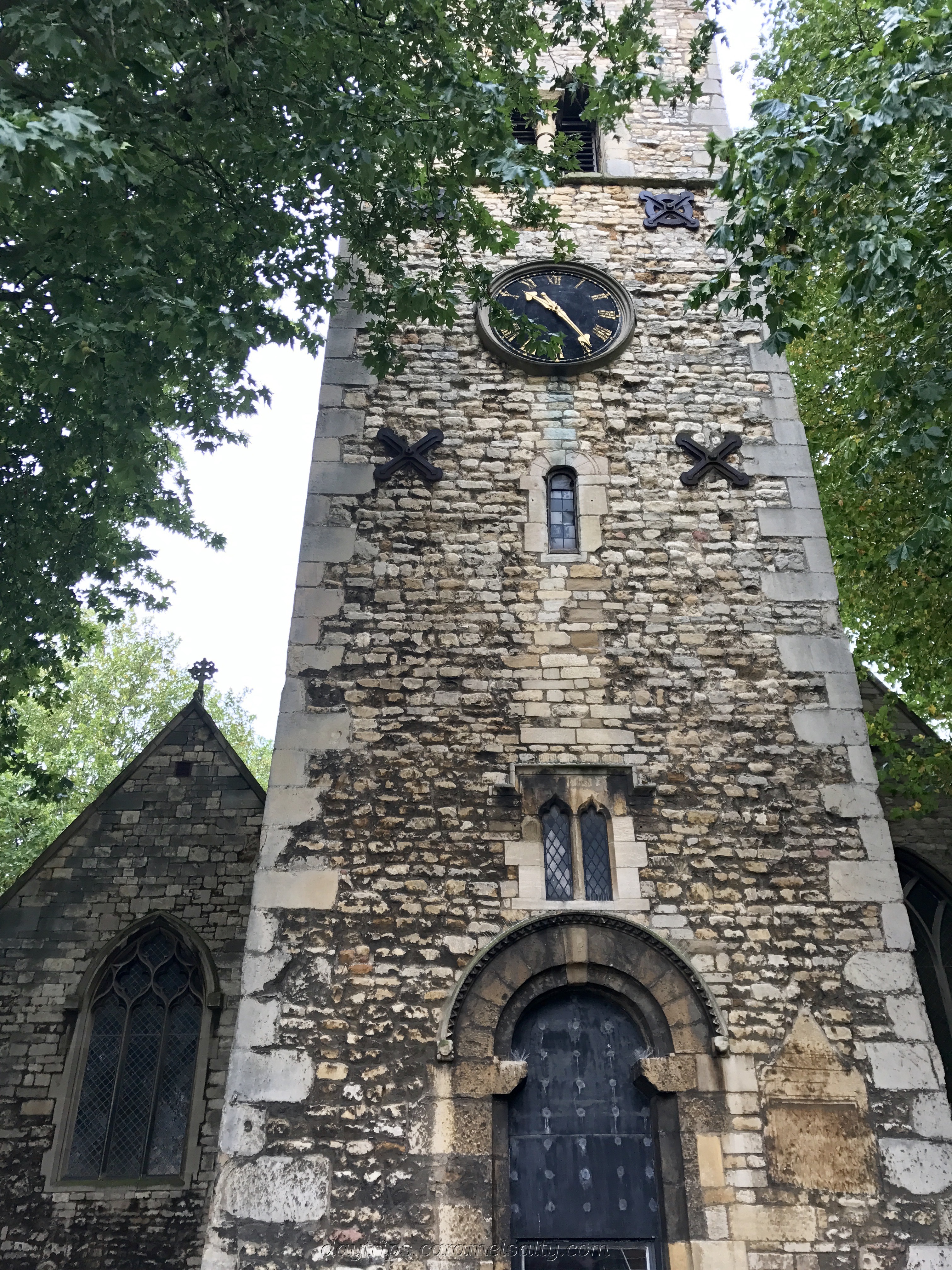 which is by the Castle. First stop is at the traffic junction of the High Street, at the church of St Mary le Wigford . Inside there are a couple of sarcophagi and an information board that tells me that this is Lincoln’s oldest church. The stone tower was built by Ertig over 1000 years ago. There is a cafe there to raise much wanted funds. The church is on the At Risk register. I make a note to visit it when I catch the return train tomorrow.
which is by the Castle. First stop is at the traffic junction of the High Street, at the church of St Mary le Wigford . Inside there are a couple of sarcophagi and an information board that tells me that this is Lincoln’s oldest church. The stone tower was built by Ertig over 1000 years ago. There is a cafe there to raise much wanted funds. The church is on the At Risk register. I make a note to visit it when I catch the return train tomorrow.
I cro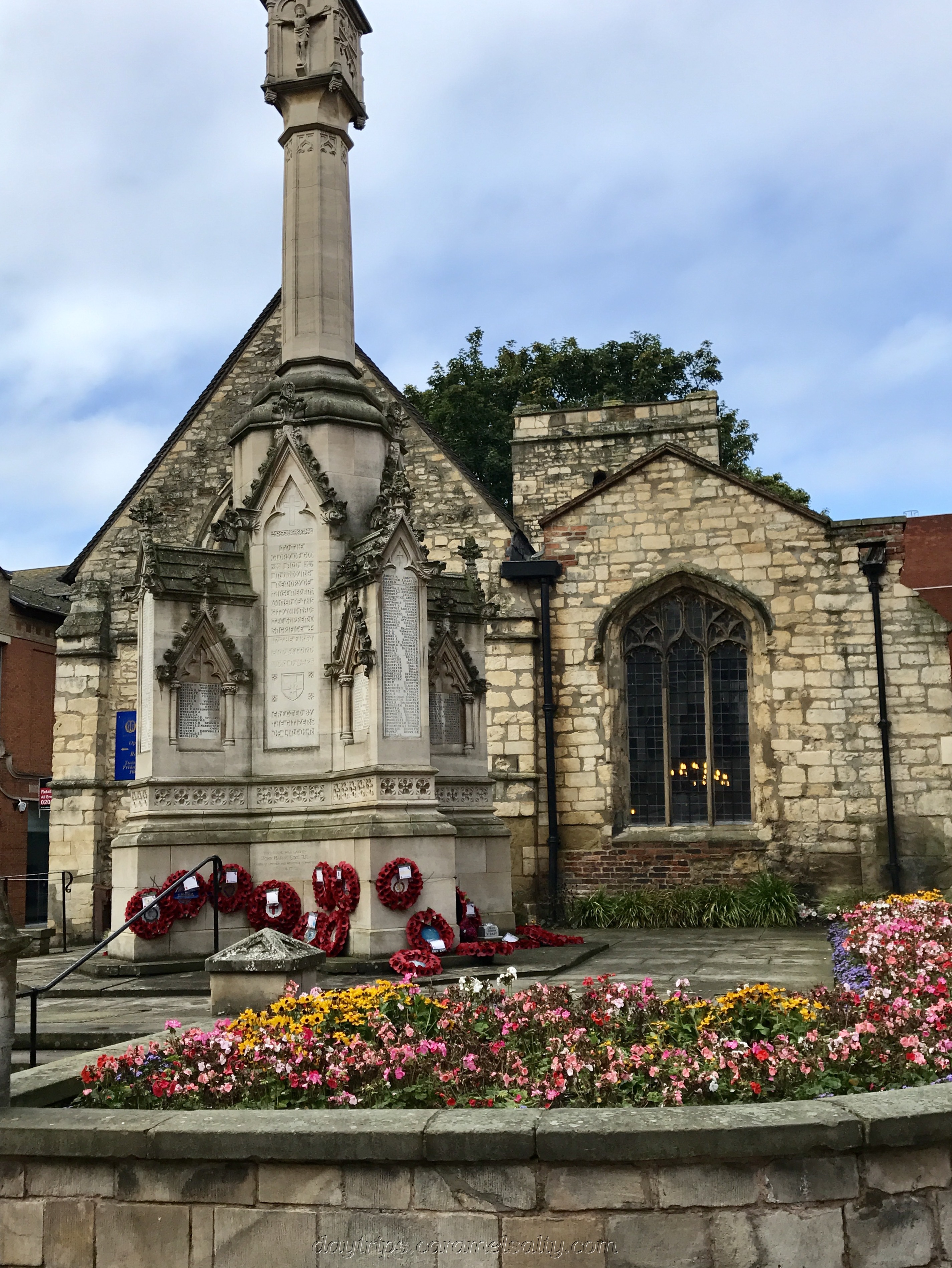 ss over to the High Street, which, like all other high street
ss over to the High Street, which, like all other high street s, is filled with chain stores. However just half way up, on the left, is St Benedict’s Church which also has a café. This time I stop, as it is a charming church. With medieval wood beamed roof and very friendly staff who give me a map and some tips about where to go.
s, is filled with chain stores. However just half way up, on the left, is St Benedict’s Church which also has a café. This time I stop, as it is a charming church. With medieval wood beamed roof and very friendly staff who give me a map and some tips about where to go.
I continue along the High Street. This is the original Roman Ermine 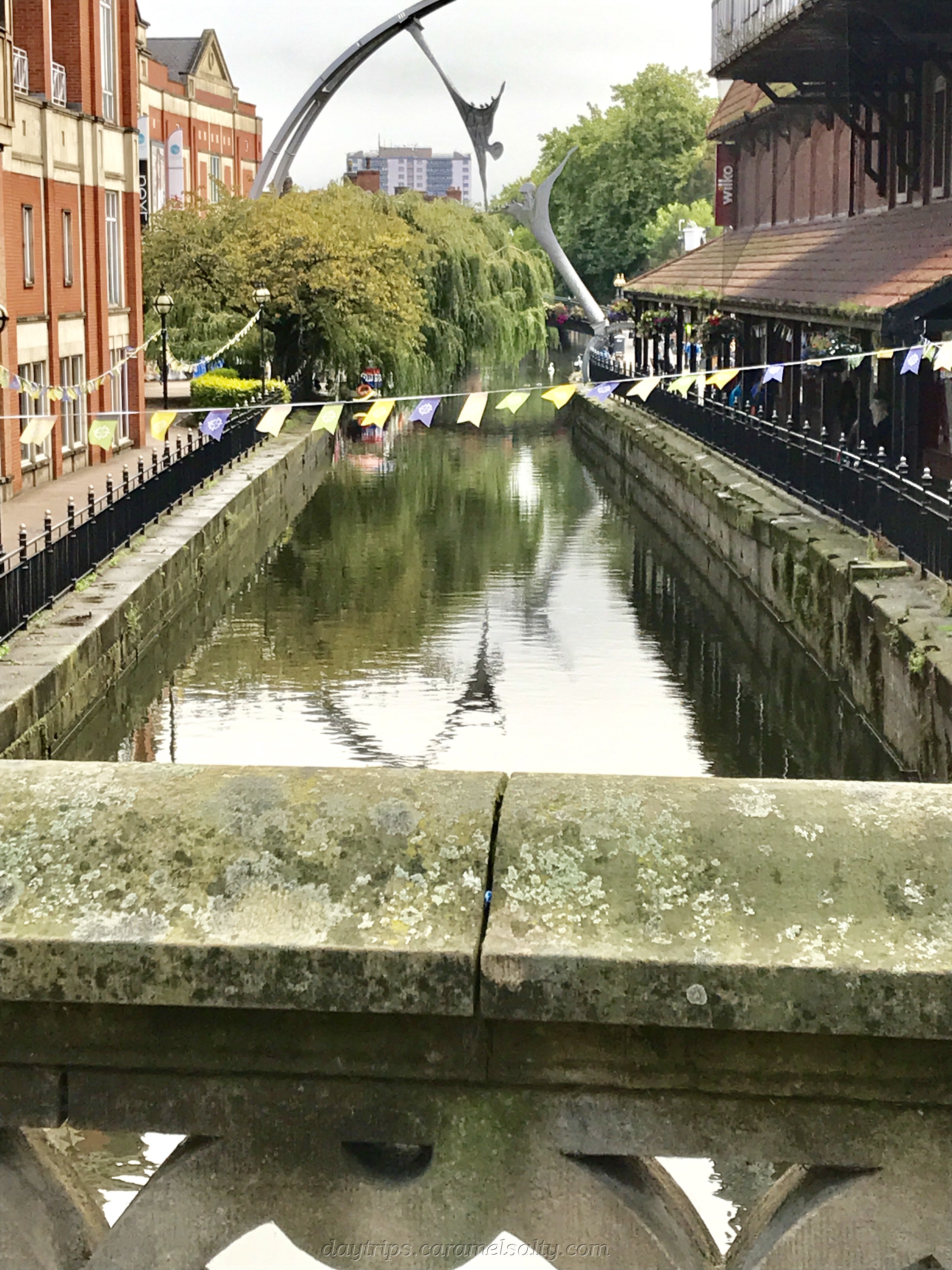 Street, which was a major Roman Road that ran from London (Londinium) to Lincoln (Lindum Colonia) and York (Eboracum). Ahead, on the left is the half-timbered 16th century High Bridge Café sitting on top of High Bridge, built in 1160 over the River Witham. The bridge was a Norman vaulted structure and the oldest bridge in the country to still carry buildings. Glance along the river to the right to see the striking modern Empowerment statue spanning the water.
Street, which was a major Roman Road that ran from London (Londinium) to Lincoln (Lindum Colonia) and York (Eboracum). Ahead, on the left is the half-timbered 16th century High Bridge Café sitting on top of High Bridge, built in 1160 over the River Witham. The bridge was a Norman vaulted structure and the oldest bridge in the country to still carry buildings. Glance along the river to the right to see the striking modern Empowerment statue spanning the water.
By the cafe are a set of stairs called the The Glory Hole. A short distance ahead is Brayford Pool, the origin of Lincoln’s name. This piece of water was known as “lin” 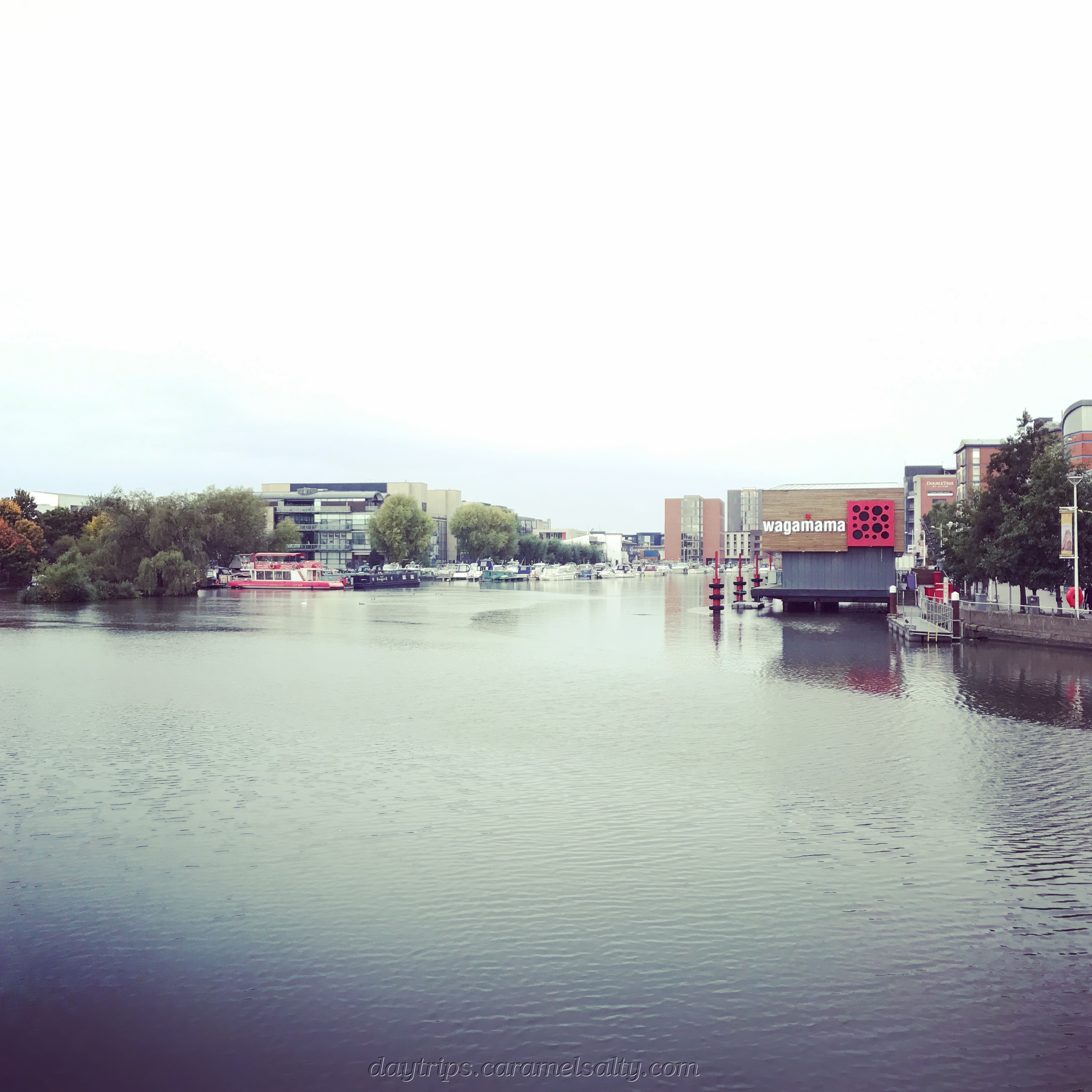 before the Romans arrived around AD50 and Latinised it to Lindum. During the 12th and 13th century, wool and cloth were the most important trades at this inland port. Bradford Pool was reached by sea, due east, by the River Witham and from the west by the Fossdyke Navigation Canal. It is now a marina and a vibrant waterfront. The university is to your left on the other side of the pool.
before the Romans arrived around AD50 and Latinised it to Lindum. During the 12th and 13th century, wool and cloth were the most important trades at this inland port. Bradford Pool was reached by sea, due east, by the River Witham and from the west by the Fossdyke Navigation Canal. It is now a marina and a vibrant waterfront. The university is to your left on the other side of the pool.
Return to High Bridge and continue your walk. Ahead, built on the site of the old Roman gateway out of the Lower City, is a stone arch known as the Stonebow. The 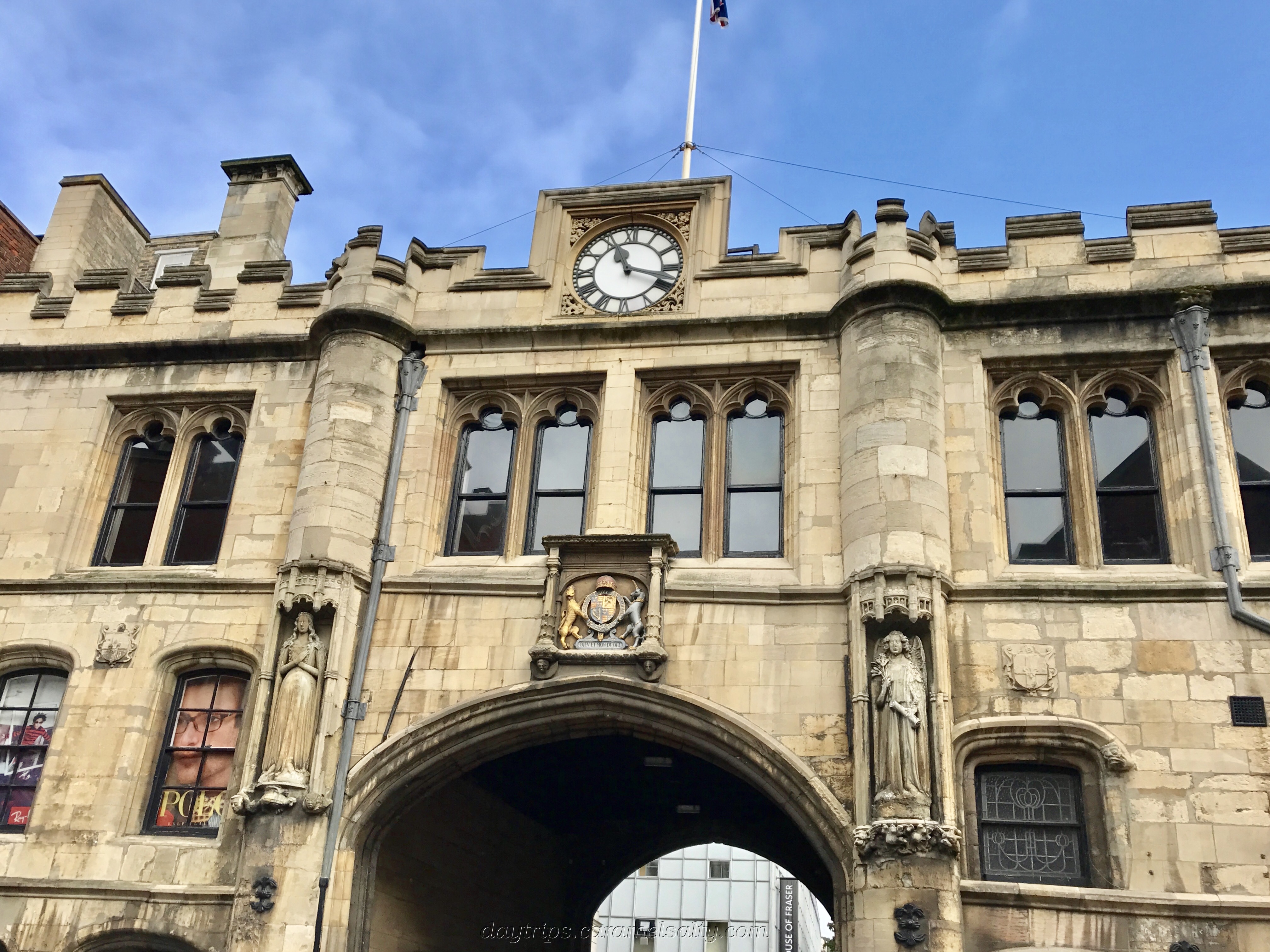 Guildhall above it, holds many items of regalia, including the sword presented by King Richard II in 1387. Council meetings are held round the original meeting table. There are twice daily free guided tours of the Guildhall.. On crossing the road, you are now in the Lower Roman City. There is a plaque on the wall of the 4th building denoting that it was the site of a Roman temple to Mercury (god of shopkeepers, merchants, travellers and transporters of goods, and thieves and tricksters) and that nearby was the Moot Stone, the meeting place of the Danish b
Guildhall above it, holds many items of regalia, including the sword presented by King Richard II in 1387. Council meetings are held round the original meeting table. There are twice daily free guided tours of the Guildhall.. On crossing the road, you are now in the Lower Roman City. There is a plaque on the wall of the 4th building denoting that it was the site of a Roman temple to Mercury (god of shopkeepers, merchants, travellers and transporters of goods, and thieves and tricksters) and that nearby was the Moot Stone, the meeting place of the Danish b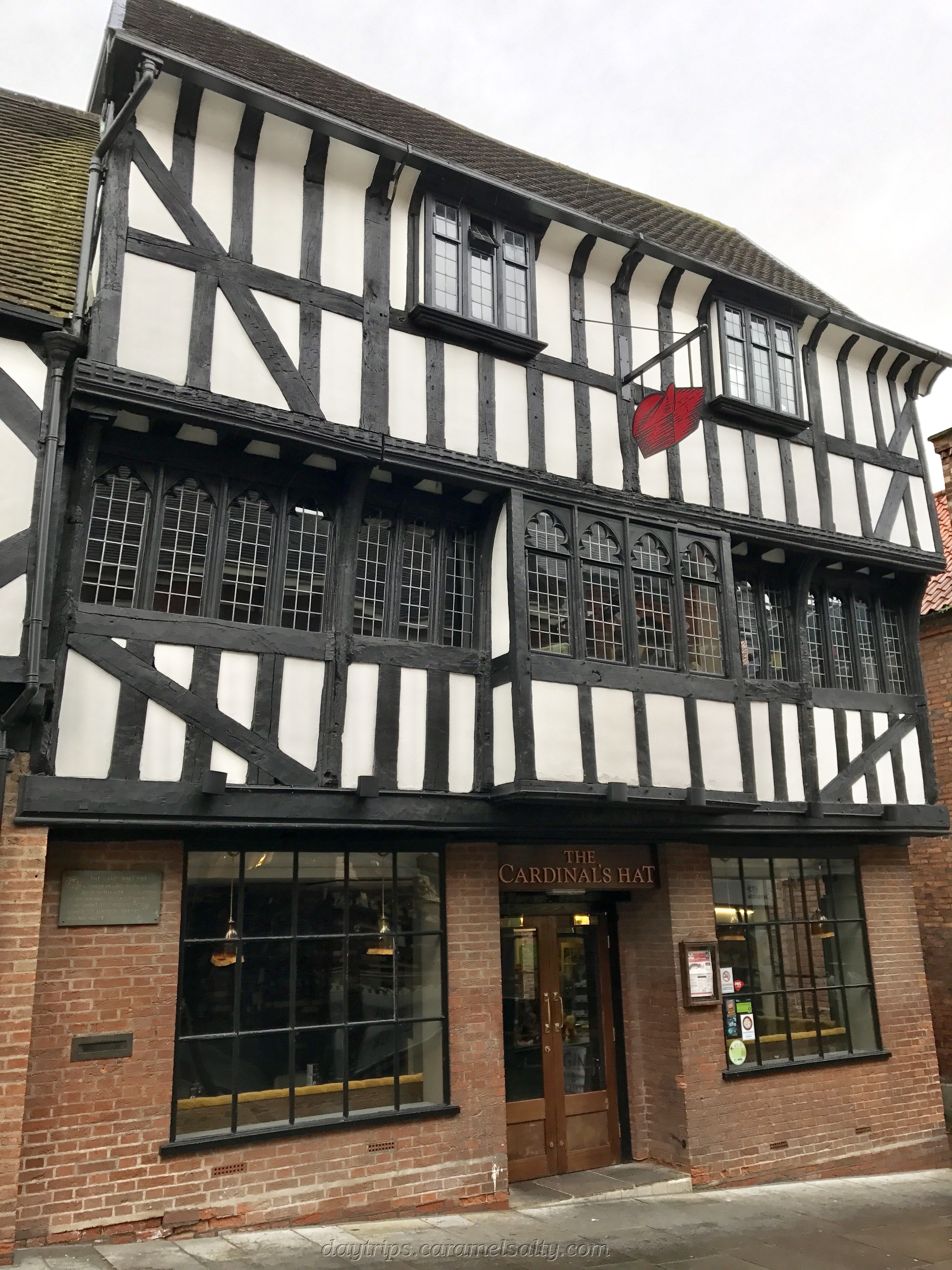 urghwaroot which governed in the 9th century after the Roman invasion.
urghwaroot which governed in the 9th century after the Roman invasion.
Cardinal’s Hat, at the corner of Grantham Street and High Street is named after Cardinal Wolsey. It is meant to look like a 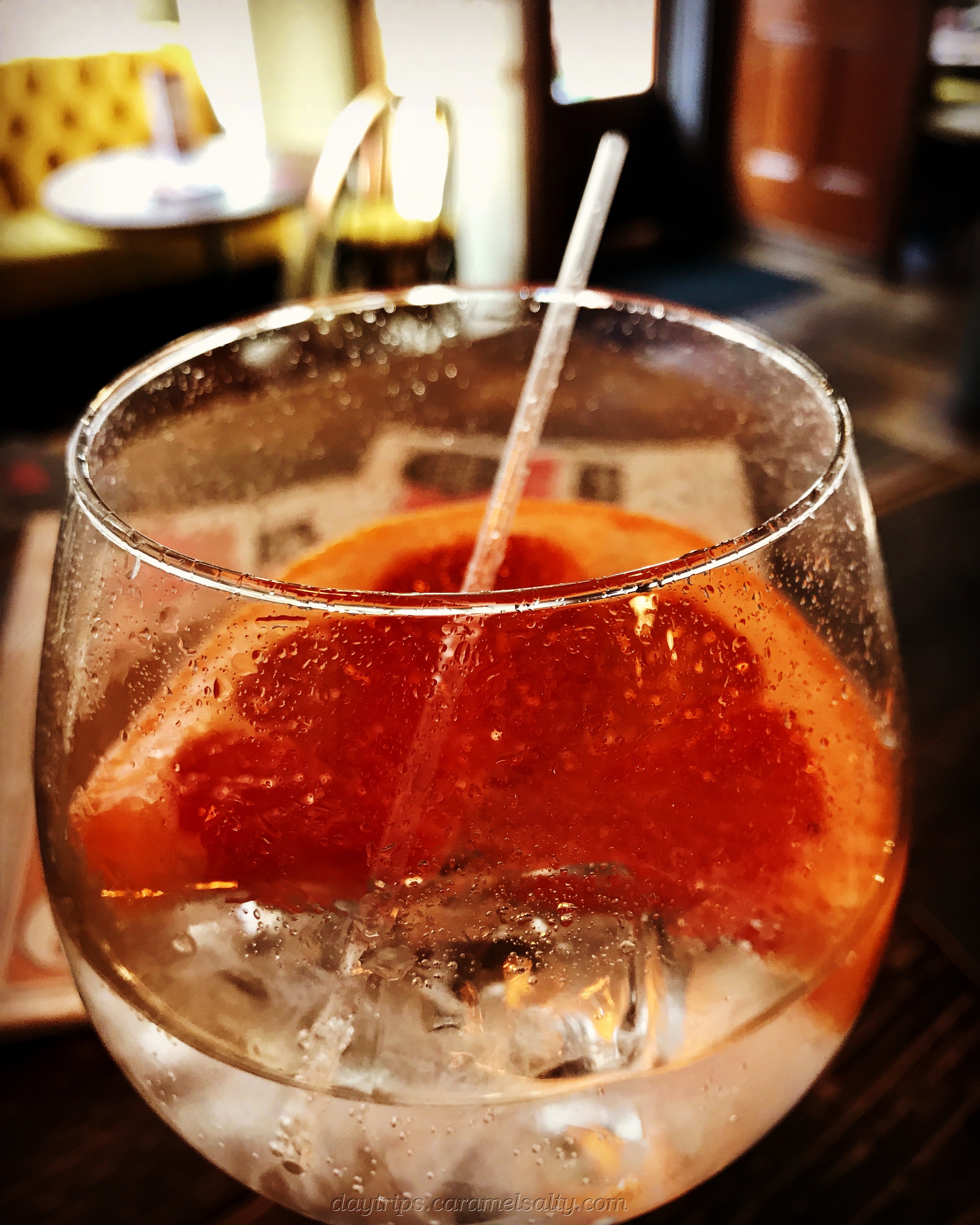 cardinal’s hat, though I did struggle to make it out. Cardinal’s Hat is also a gin palace, and I enjoyed a couple of gins on my way to the train station the next day ( it’s only a 15 minute walk to the station). Cardinal Wolsey was the Bishop of Lincoln for a short while, and was eventually appointed Lord Chancellor to Henry VIII. See rise and fall of Cardinal Wolsey.
cardinal’s hat, though I did struggle to make it out. Cardinal’s Hat is also a gin palace, and I enjoyed a couple of gins on my way to the train station the next day ( it’s only a 15 minute walk to the station). Cardinal Wolsey was the Bishop of Lincoln for a short while, and was eventually appointed Lord Chancellor to Henry VIII. See rise and fall of Cardinal Wolsey.
Continue along The Straight. At the junction of Danes Terrace, on the left is Jew’s House and Jew’s Court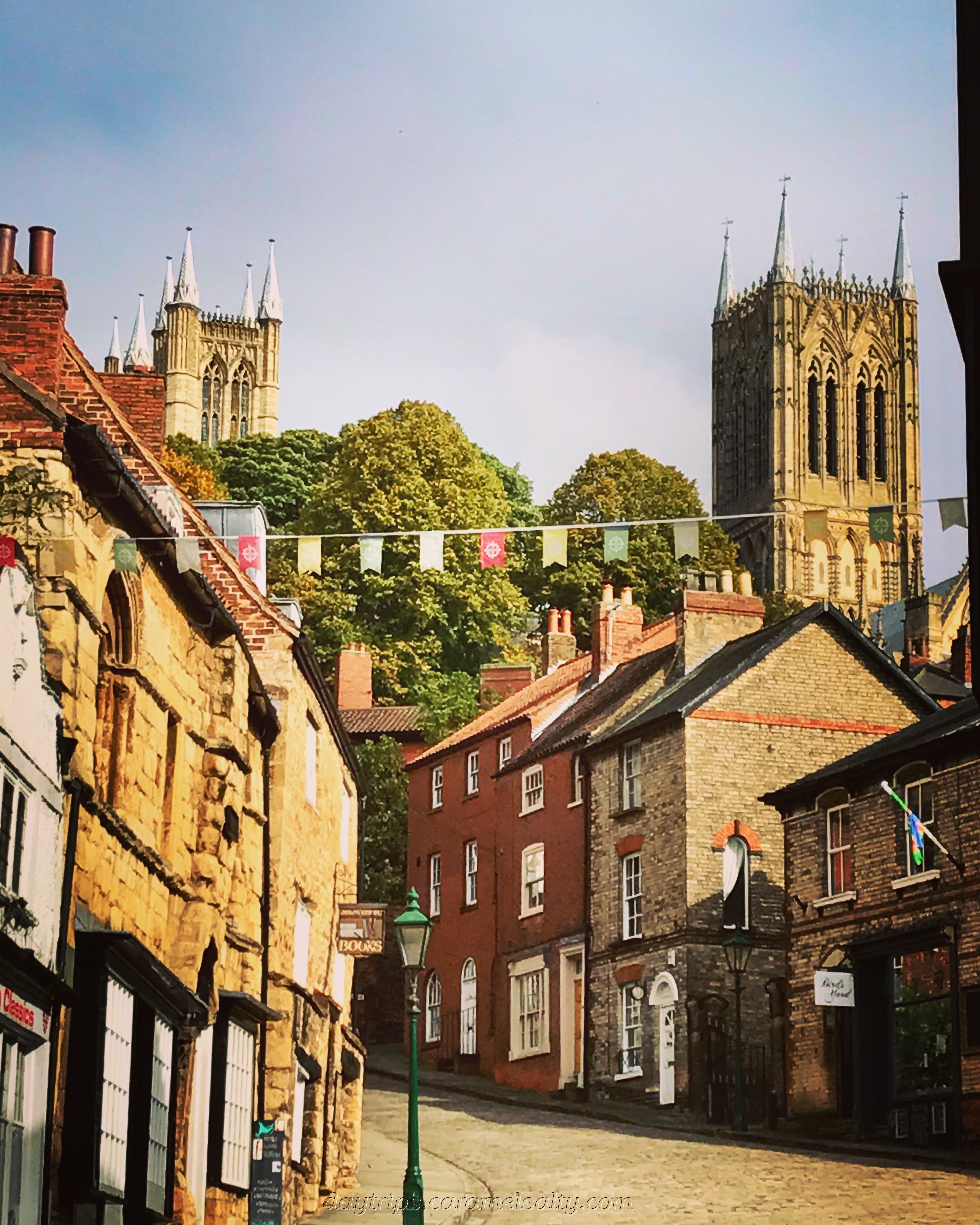 , both from the 12th century. There was a thriving Jewish Community in Lincoln in the Middle Ages (11th and 12th century). Before the advent of banks, Jews fulfilled the role of moneylenders, as by law, Christians were not allowed to. Resentment of the wealthy Jews and growing hostility towards ‘infidels’ from the crusades led to increasing anti Semitic attacks. It culminated with King Edward I issuing an edict in 1290 expelling all Jews from England. The Jewish people were readmitted to England in 1656, their surprising ally being Oliver Cromwell. See Jews in Britain
, both from the 12th century. There was a thriving Jewish Community in Lincoln in the Middle Ages (11th and 12th century). Before the advent of banks, Jews fulfilled the role of moneylenders, as by law, Christians were not allowed to. Resentment of the wealthy Jews and growing hostility towards ‘infidels’ from the crusades led to increasing anti Semitic attacks. It culminated with King Edward I issuing an edict in 1290 expelling all Jews from England. The Jewish people were readmitted to England in 1656, their surprising ally being Oliver Cromwell. See Jews in Britain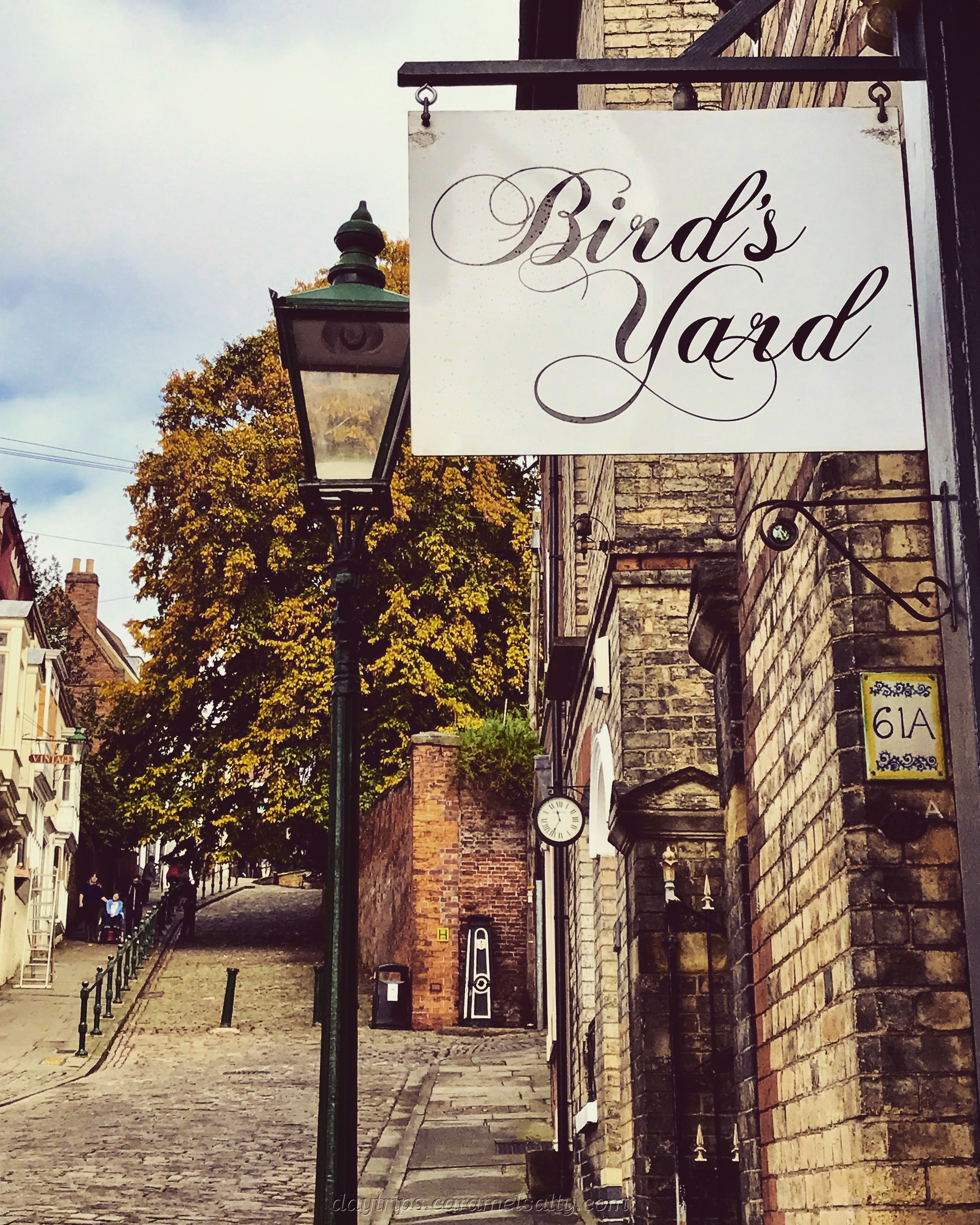
At this point, you will probably catch your first of many stunning views of the cathedral. Birds Yard marks the beginning of Steep Hill, which runs slightly east of Ermine Street. The bollards at the start of Steep Hill (Steep Hill Rail) were put in by the City Council after Colonel Sibthorp, a member of Parliament in the late 19th century, accepted a wager to drive his carriage down Steep Hill, at speed. He survived to tell the tale and you can read more about the eccentric Colonel Sibthorpe here.
Ascend St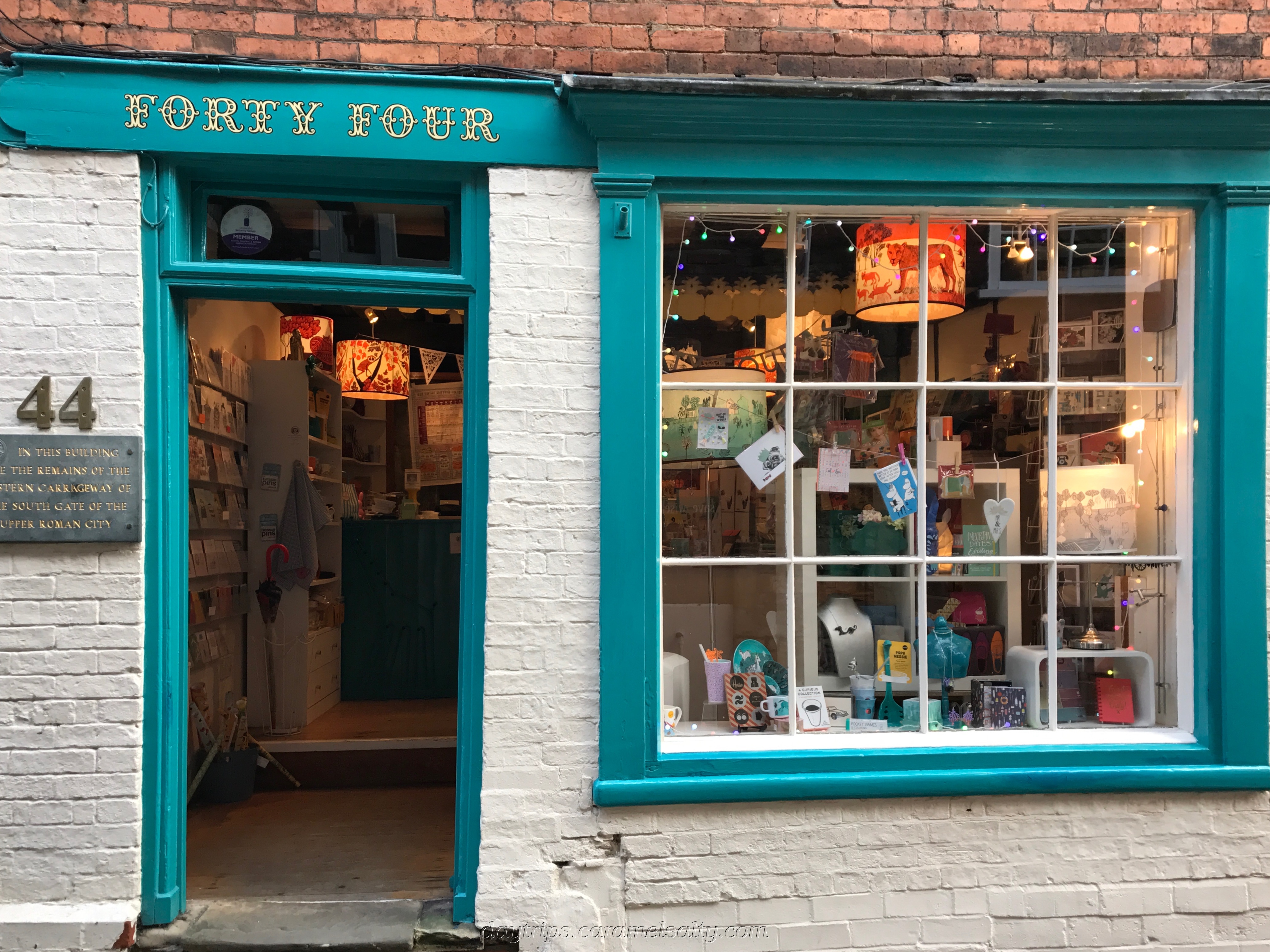 eep Hill to the shop at No 44. Inside this shop, you can see the remains of the Roman South Gate to the upper city. On the right hand side of Steep Hill, opposite the shop, you will see an area of stones set into the brick building. This is part of the western carriage way of the gate.
eep Hill to the shop at No 44. Inside this shop, you can see the remains of the Roman South Gate to the upper city. On the right hand side of Steep Hill, opposite the shop, you will see an area of stones set into the brick building. This is part of the western carriage way of the gate.
You are now entering the area known as the Bail, the original walled Roman Upper City. The street is full of cafes, specialist shops and historic buildings. Just 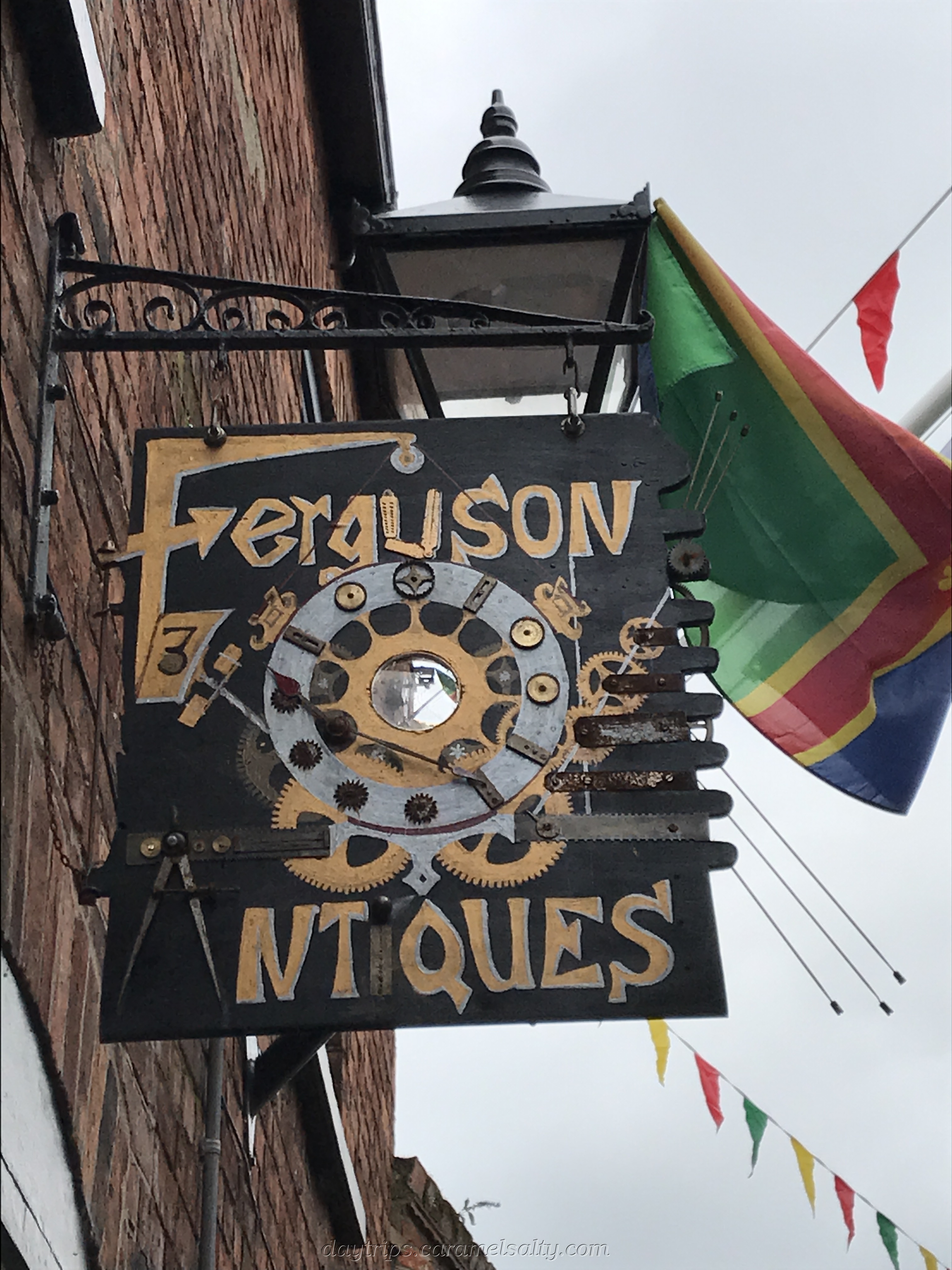 outside the Magna Carta pub is a golden post box dedicated to Sophie Wells, the successful equestrian at the 2012 Paralympics. At the same corner is the Tourist Office, where I popped in to purchase my joint cathedral and castle ticket, which are valid for 2 free visits within 6 months.
outside the Magna Carta pub is a golden post box dedicated to Sophie Wells, the successful equestrian at the 2012 Paralympics. At the same corner is the Tourist Office, where I popped in to purchase my joint cathedral and castle ticket, which are valid for 2 free visits within 6 months.
To your right, is the 14th century Exchequergate which was part of the walled defences of the Close, the 40 acre site of the Cathedral and the neighbou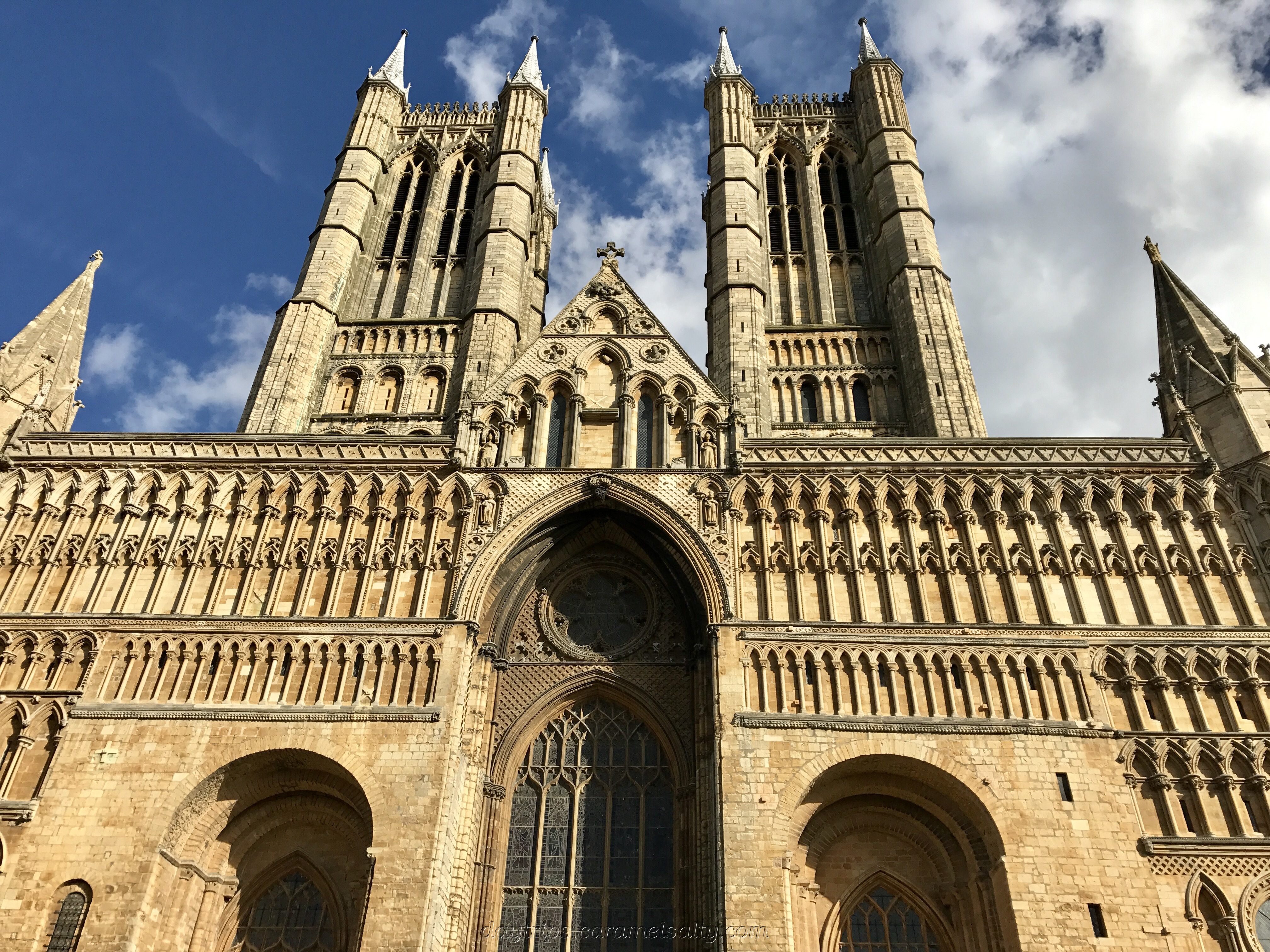 ring streets. Walk through Exchequergate for your first glimpse of the magnificent Norman front of the Cathedral.
ring streets. Walk through Exchequergate for your first glimpse of the magnificent Norman front of the Cathedral.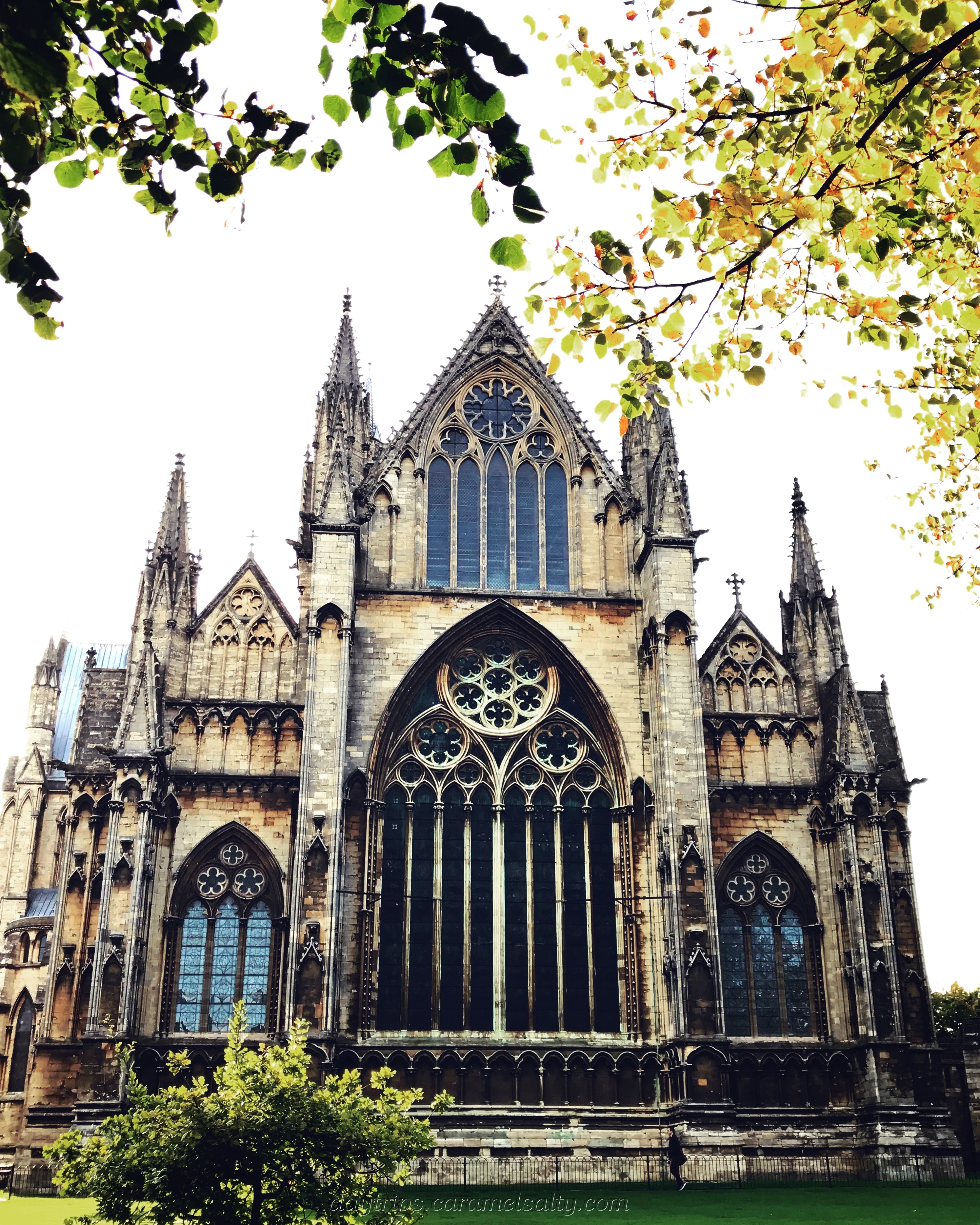 When the Normans invaded Britain in the 11th century, William the Conqueror (a.k.a the Duke of Normandy) commissioned the building of Lincoln Cathedral. It was consecrated in 1092, becoming the head of the largest diocese in England, extending from the Humber to the Thames.
When the Normans invaded Britain in the 11th century, William the Conqueror (a.k.a the Duke of Normandy) commissioned the building of Lincoln Cathedral. It was consecrated in 1092, becoming the head of the largest diocese in England, extending from the Humber to the Thames.
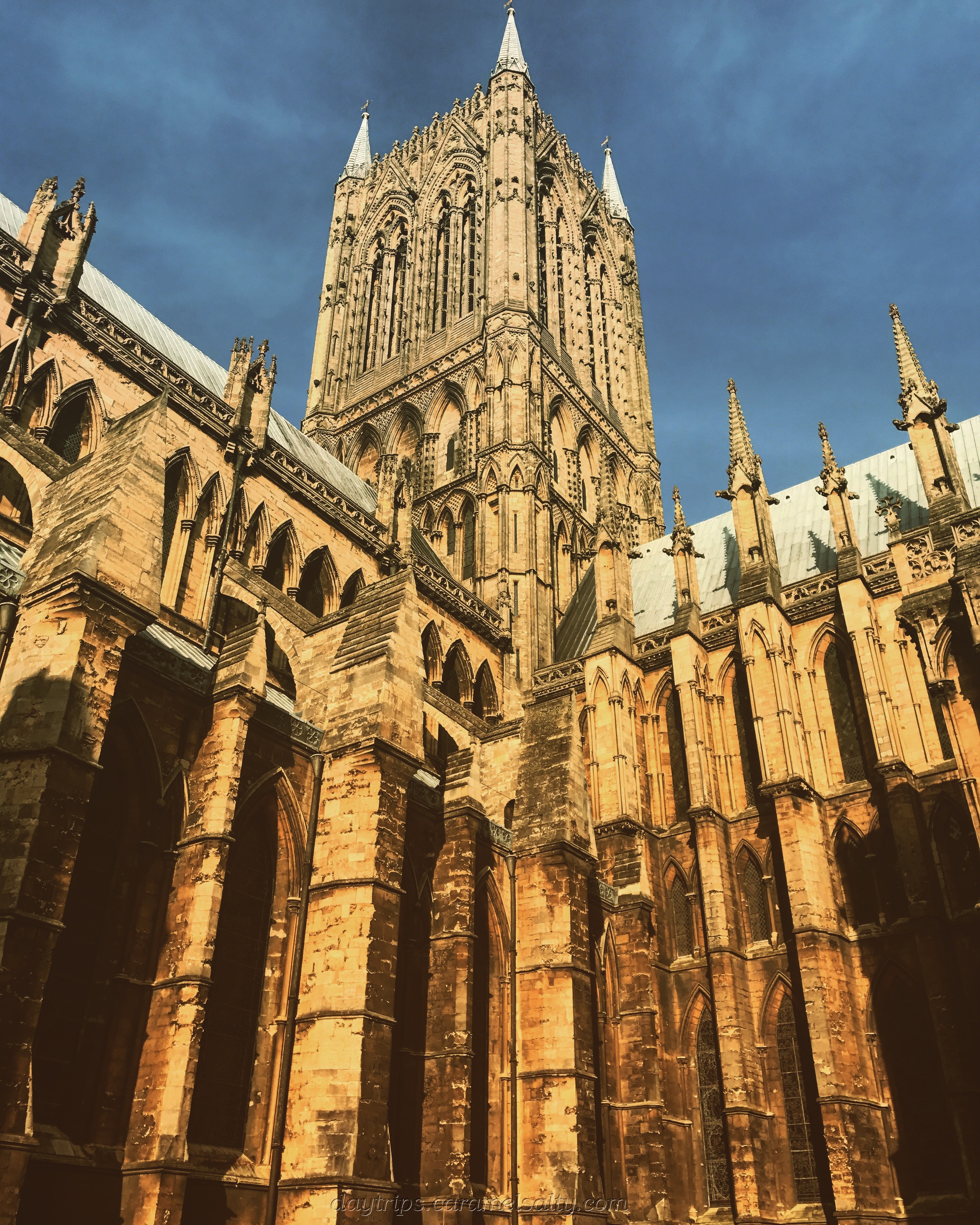 After fires (1141) and earthquakes (1185), the cathedral was rebuilt in the Gothic style. Many consider it to be the finest Gothic building in Europe. When the central spire was eventually raised in 1311, it became the tallest building in the world, taking over the mantle from the Great Pyramid of Giza. This lasted until 1549 when the spire collapsed. Walk all round the cathedral to admire the fine architecture, carvings and the towers you first spied at the bottom of Steep Hill.
After fires (1141) and earthquakes (1185), the cathedral was rebuilt in the Gothic style. Many consider it to be the finest Gothic building in Europe. When the central spire was eventually raised in 1311, it became the tallest building in the world, taking over the mantle from the Great Pyramid of Giza. This lasted until 1549 when the spire collapsed. Walk all round the cathedral to admire the fine architecture, carvings and the towers you first spied at the bottom of Steep Hill.
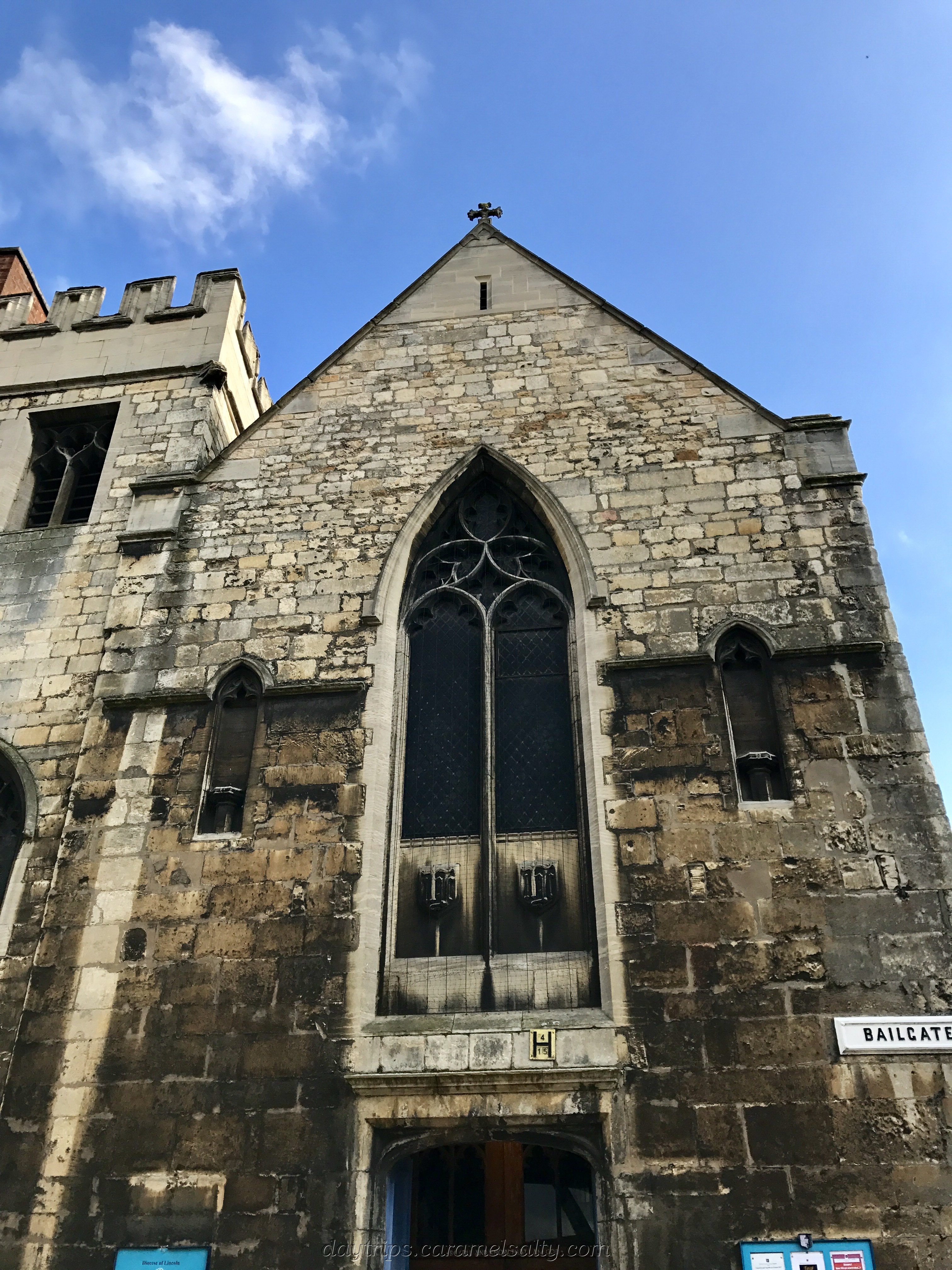 Go back pass the Exchequer gate again to St Mary Magdalene, a 13th century church. The original church was knocked down and now lies buried beneath Lincoln Cathedral. It has one of Lincolnshire’s oldest
Go back pass the Exchequer gate again to St Mary Magdalene, a 13th century church. The original church was knocked down and now lies buried beneath Lincoln Cathedral. It has one of Lincolnshire’s oldest 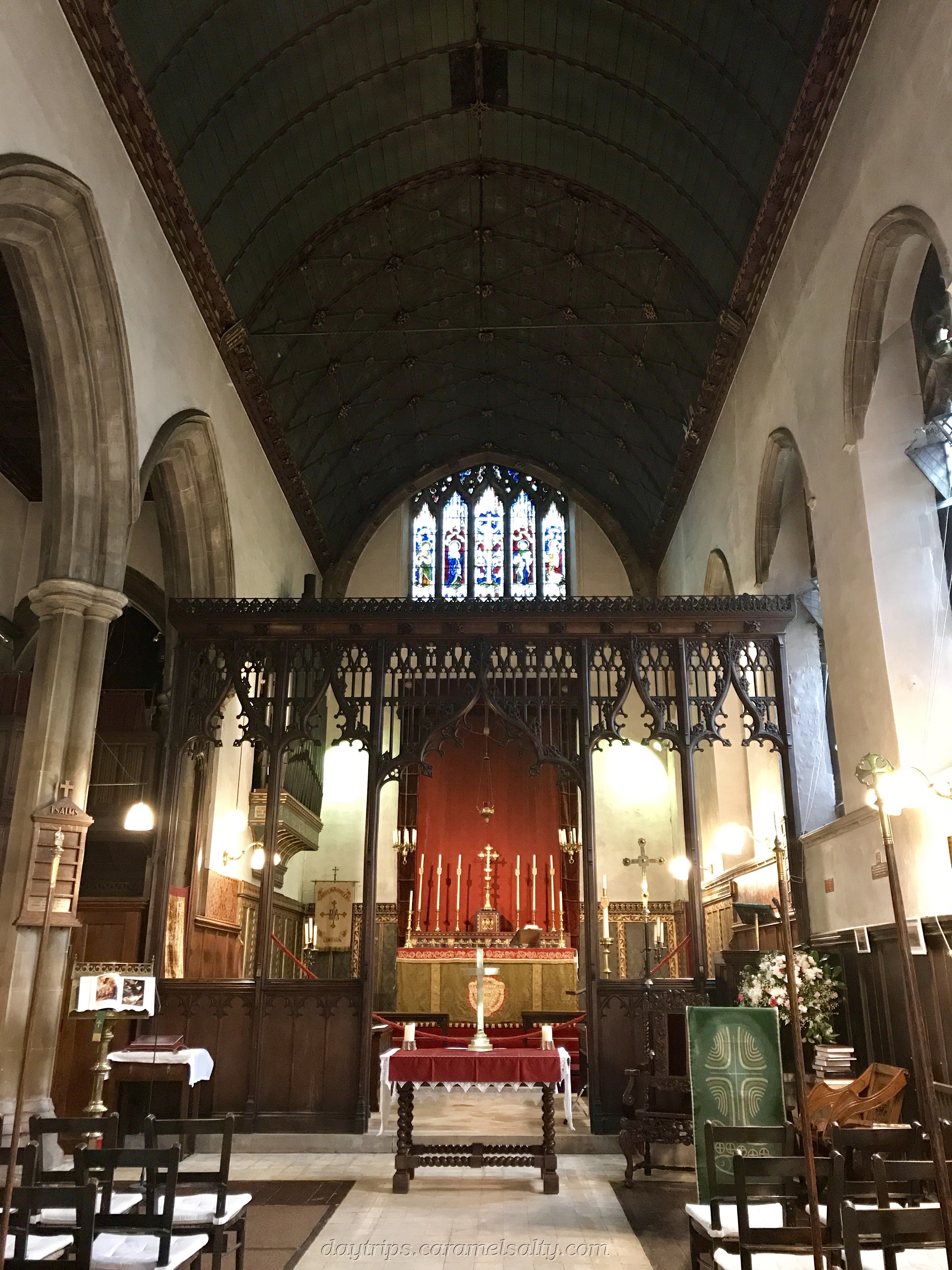 bells, dating back to 1350, which is still rung to call people to prayer. On the Sunday either before or after St Mary Magdalene’s Day (July 22nd), the Parishioners re-assert their right to worship in the Cathedral by processing across from the current church, knocking on the cathedral double doors to be let in to visit their ancient parish church and holding a service. However as the church is a only open between 10:30 to 11:30 Monday to Friday, I had to revisit the next day.
bells, dating back to 1350, which is still rung to call people to prayer. On the Sunday either before or after St Mary Magdalene’s Day (July 22nd), the Parishioners re-assert their right to worship in the Cathedral by processing across from the current church, knocking on the cathedral double doors to be let in to visit their ancient parish church and holding a service. However as the church is a only open between 10:30 to 11:30 Monday to Friday, I had to revisit the next day.
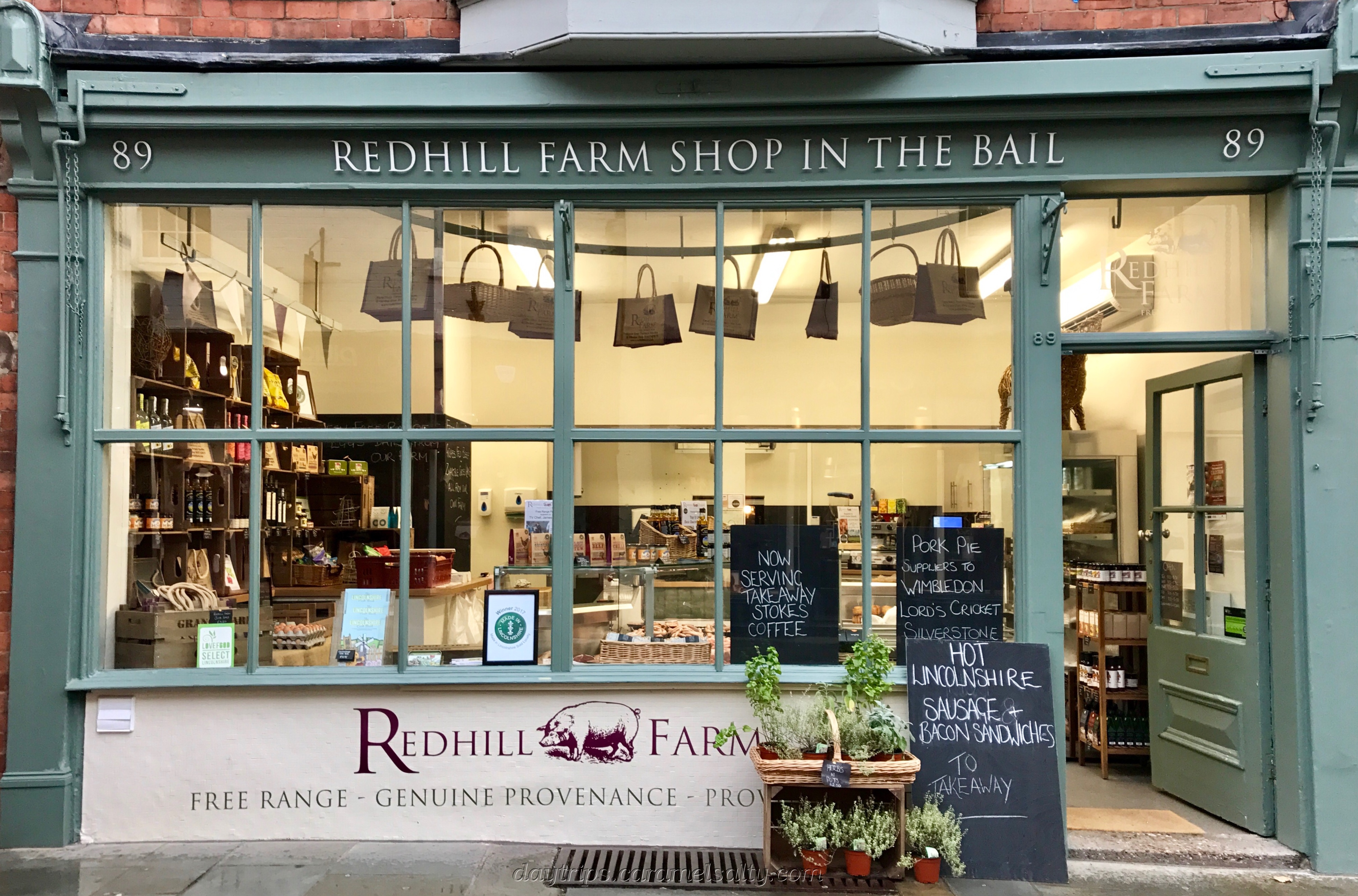 Return to Bailgate and continue up the hill. When you have gone past
Return to Bailgate and continue up the hill. When you have gone past Gordon Road (which has the wonderful Bailgate deli where I lunched), you will see a line of circular setts on Bailgate, marking the position of a Roman collonade. Turn left into Westgate to go into St-Paul-in-the-Bail, a mini park. This was the site of the very first Roman fortress. You should be able to see a Roman well here. Lincoln was founded by the Romans in 48AD on a Celtic settlement.
Gordon Road (which has the wonderful Bailgate deli where I lunched), you will see a line of circular setts on Bailgate, marking the position of a Roman collonade. Turn left into Westgate to go into St-Paul-in-the-Bail, a mini park. This was the site of the very first Roman fortress. You should be able to see a Roman well here. Lincoln was founded by the Romans in 48AD on a Celtic settlement.
I finally arr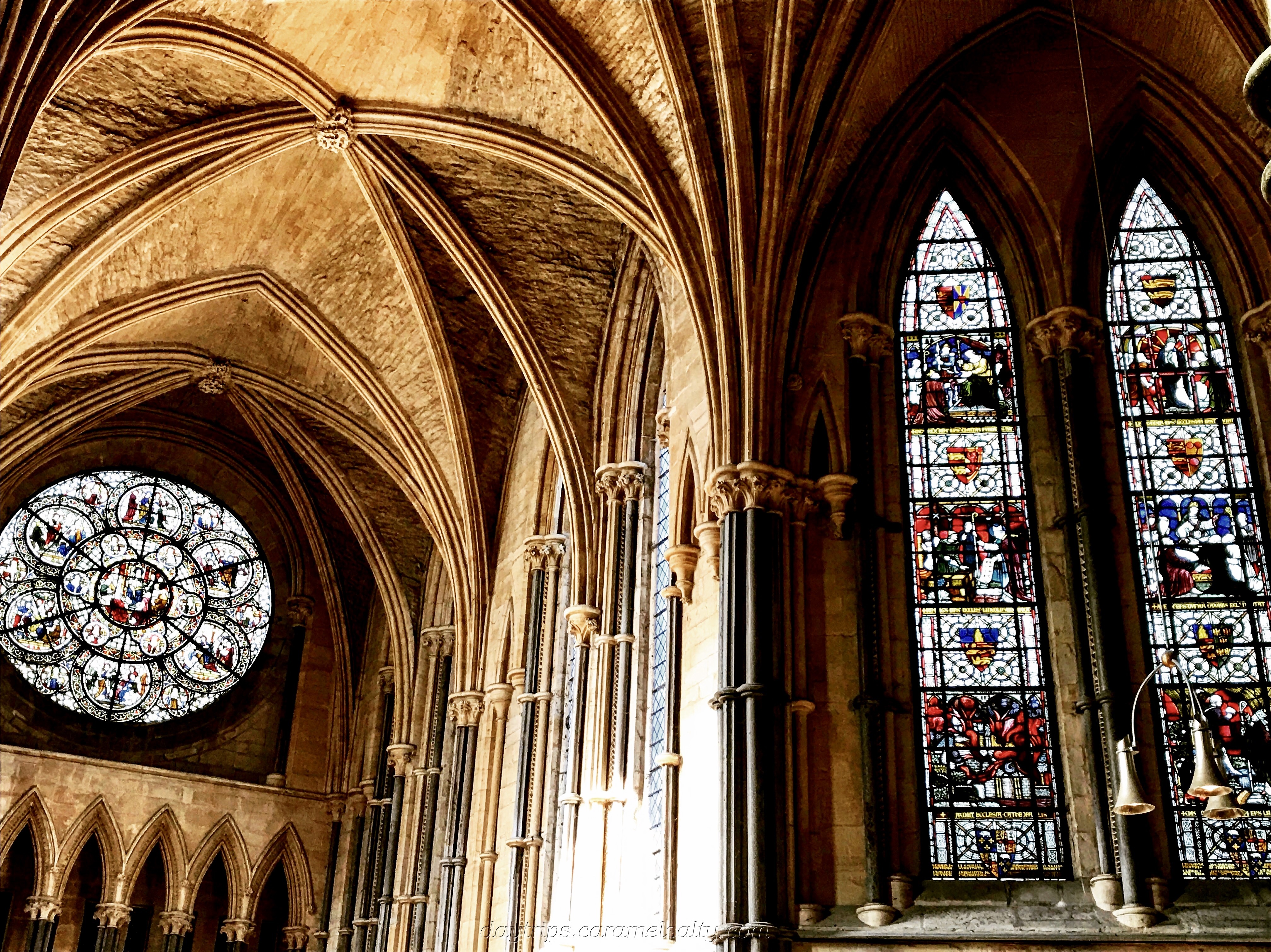 ive at my hotel, and having checked in, I r
ive at my hotel, and having checked in, I r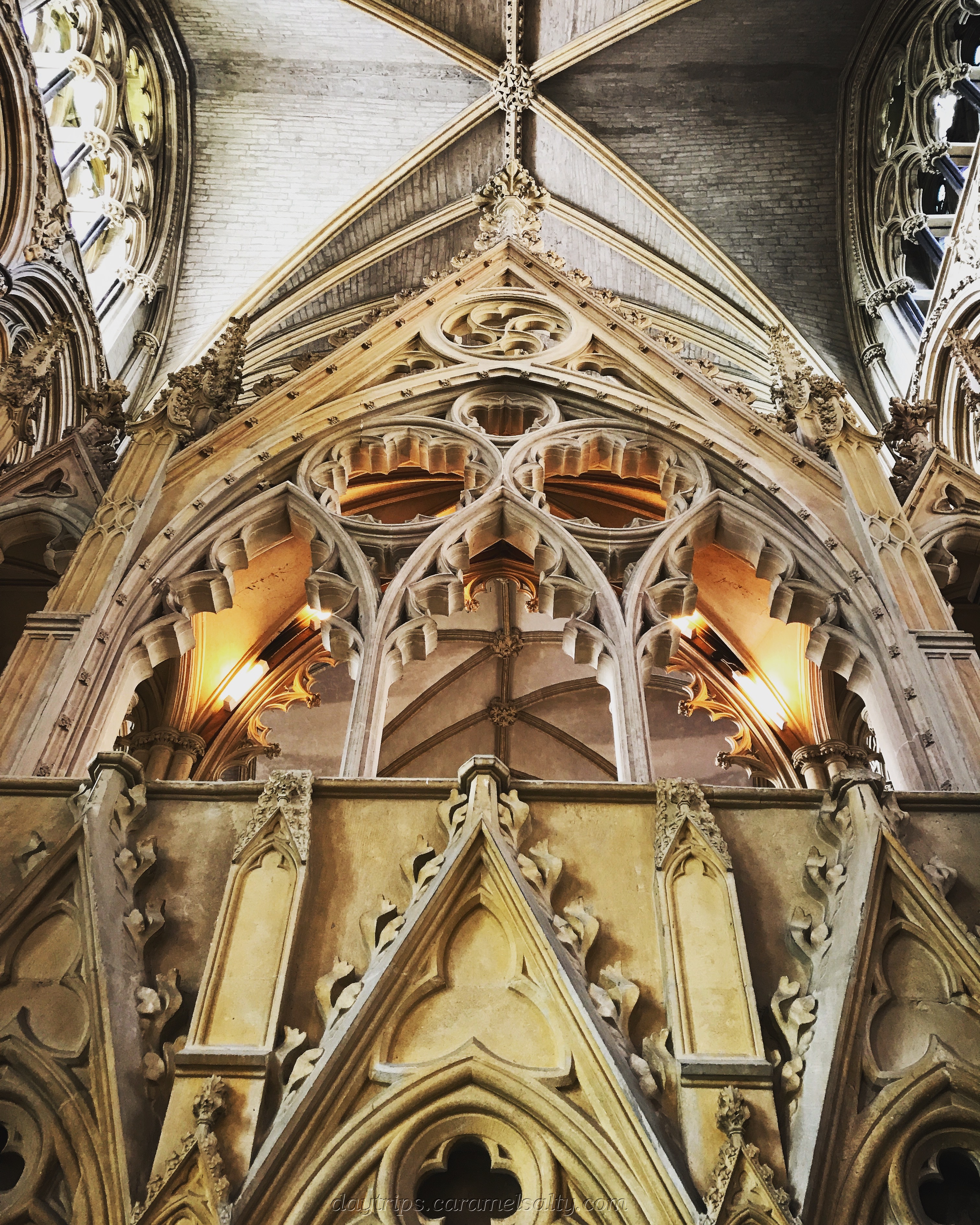 ush over to Lincoln Cathedral, which is a must see. In spite of its size, the cathedral is filled with intricate detail. It is said that the architects of the Gothic style, who extended the cathedral high above the original Norman facade, reached the pinnacle of their art here. Floor tours run every day. The tourist office will provide you a slip of
ush over to Lincoln Cathedral, which is a must see. In spite of its size, the cathedral is filled with intricate detail. It is said that the architects of the Gothic style, who extended the cathedral high above the original Norman facade, reached the pinnacle of their art here. Floor tours run every day. The tourist office will provide you a slip of 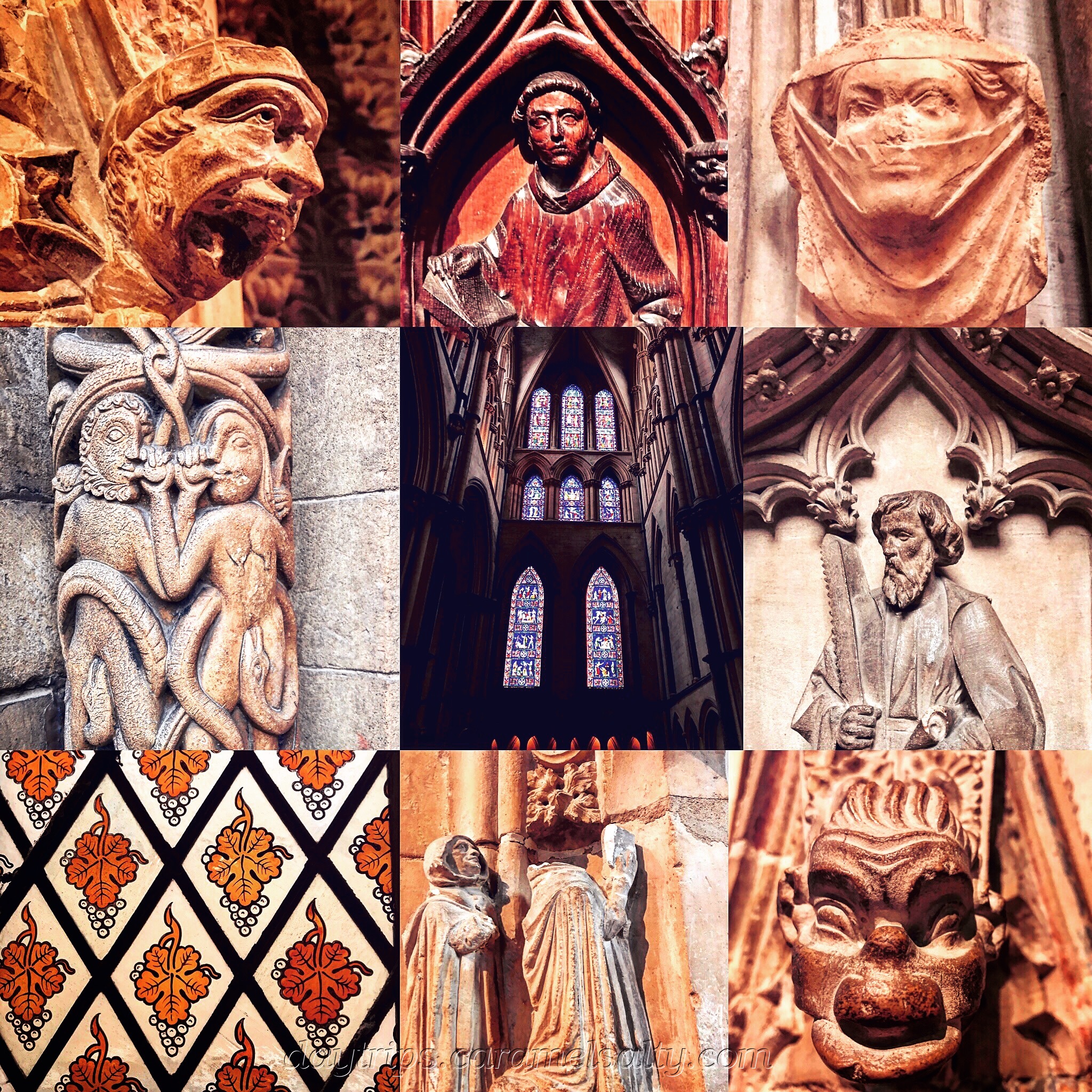 paper of all tour times. And do spend plenty of time wandering around admiring the artistry of the stone masons, woodcarvers and stained glass. Do also seek out the Lincoln Imp high up in the Atlas Choir. Read about the legend of the Lincoln Imp .
paper of all tour times. And do spend plenty of time wandering around admiring the artistry of the stone masons, woodcarvers and stained glass. Do also seek out the Lincoln Imp high up in the Atlas Choir. Read about the legend of the Lincoln Imp .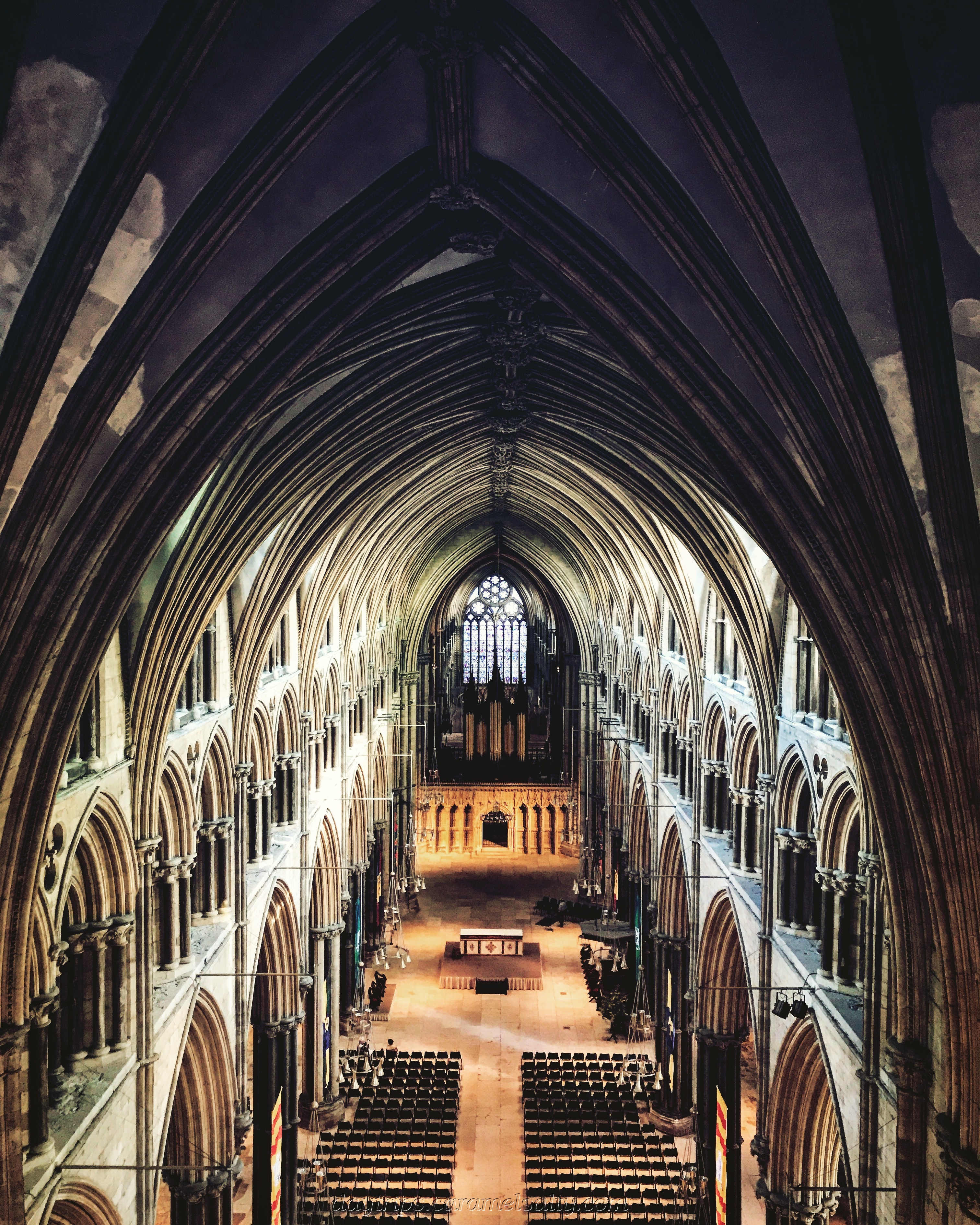
If there is one tour you must do, its the roof tour at the cathedral. 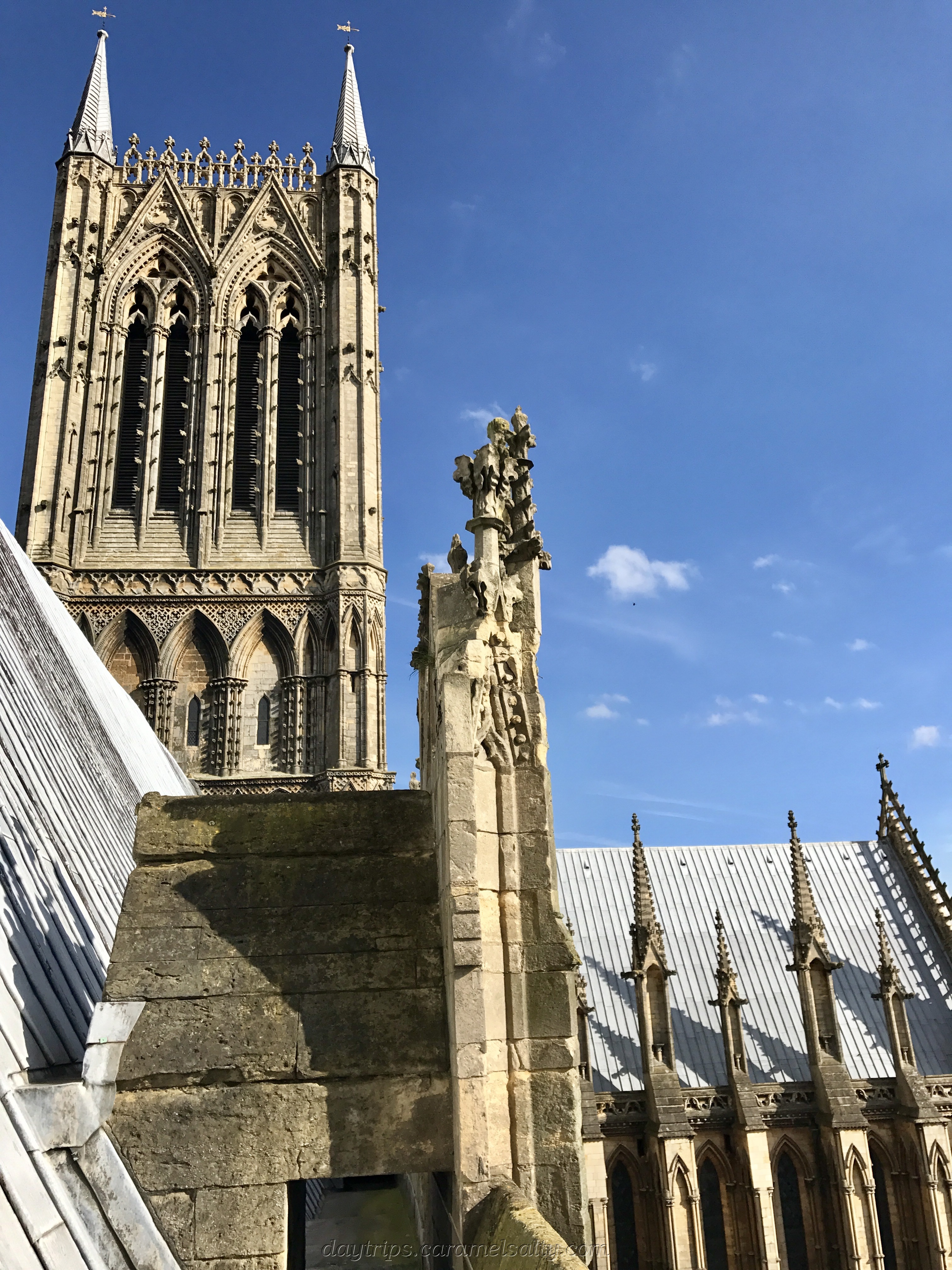 Apart from getting to go to unusual places within the cathedral, you get a stunning perspective of the cathedral and get great views of Lincoln. The tower tours only run on Saturdays. They take you up the 388 steps of the tallest tower in the Cathedral for magnificent views of the surrounding ar
Apart from getting to go to unusual places within the cathedral, you get a stunning perspective of the cathedral and get great views of Lincoln. The tower tours only run on Saturdays. They take you up the 388 steps of the tallest tower in the Cathedral for magnificent views of the surrounding ar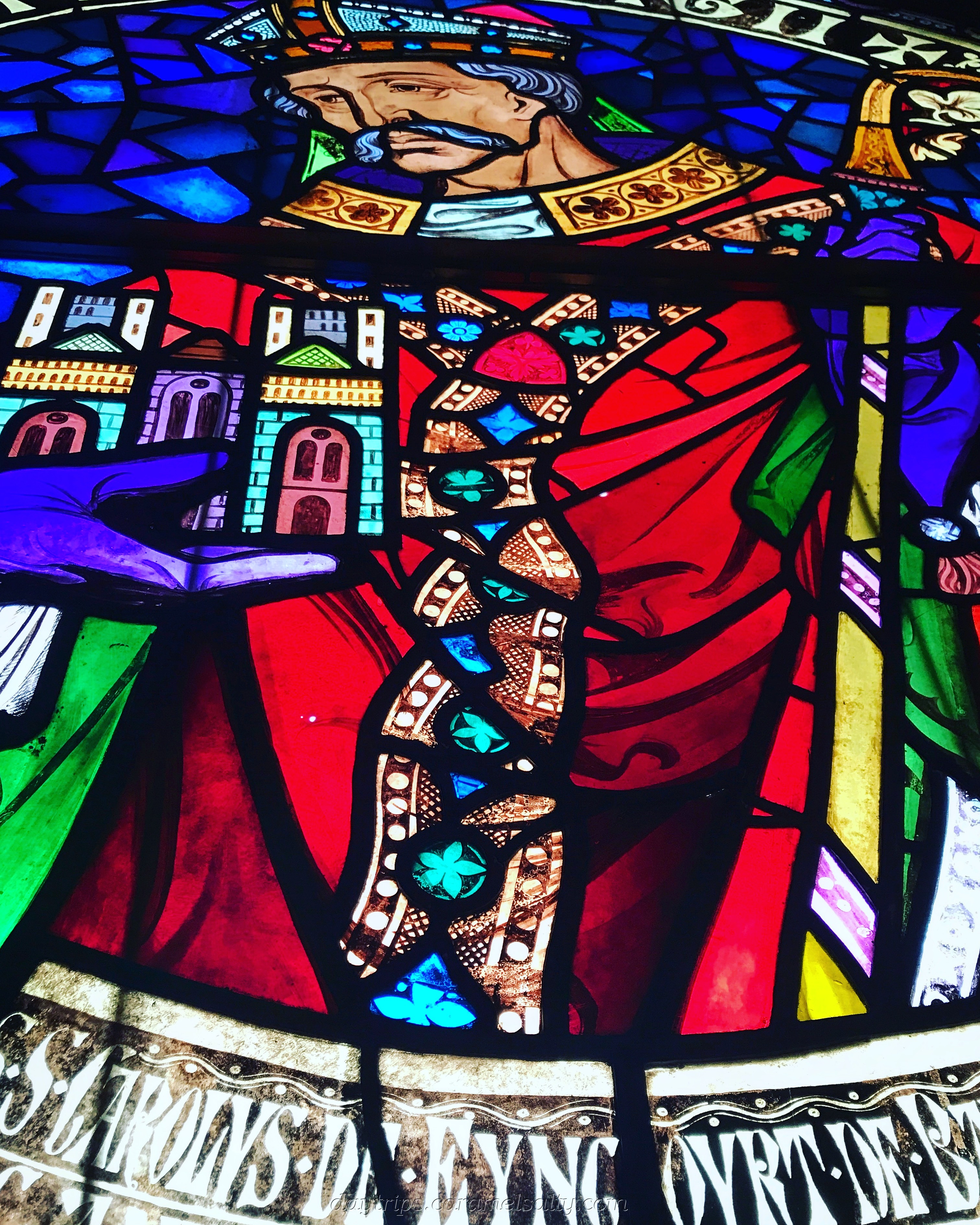 ea.
ea.
Remigius who had accompanied William the Conqueror on his 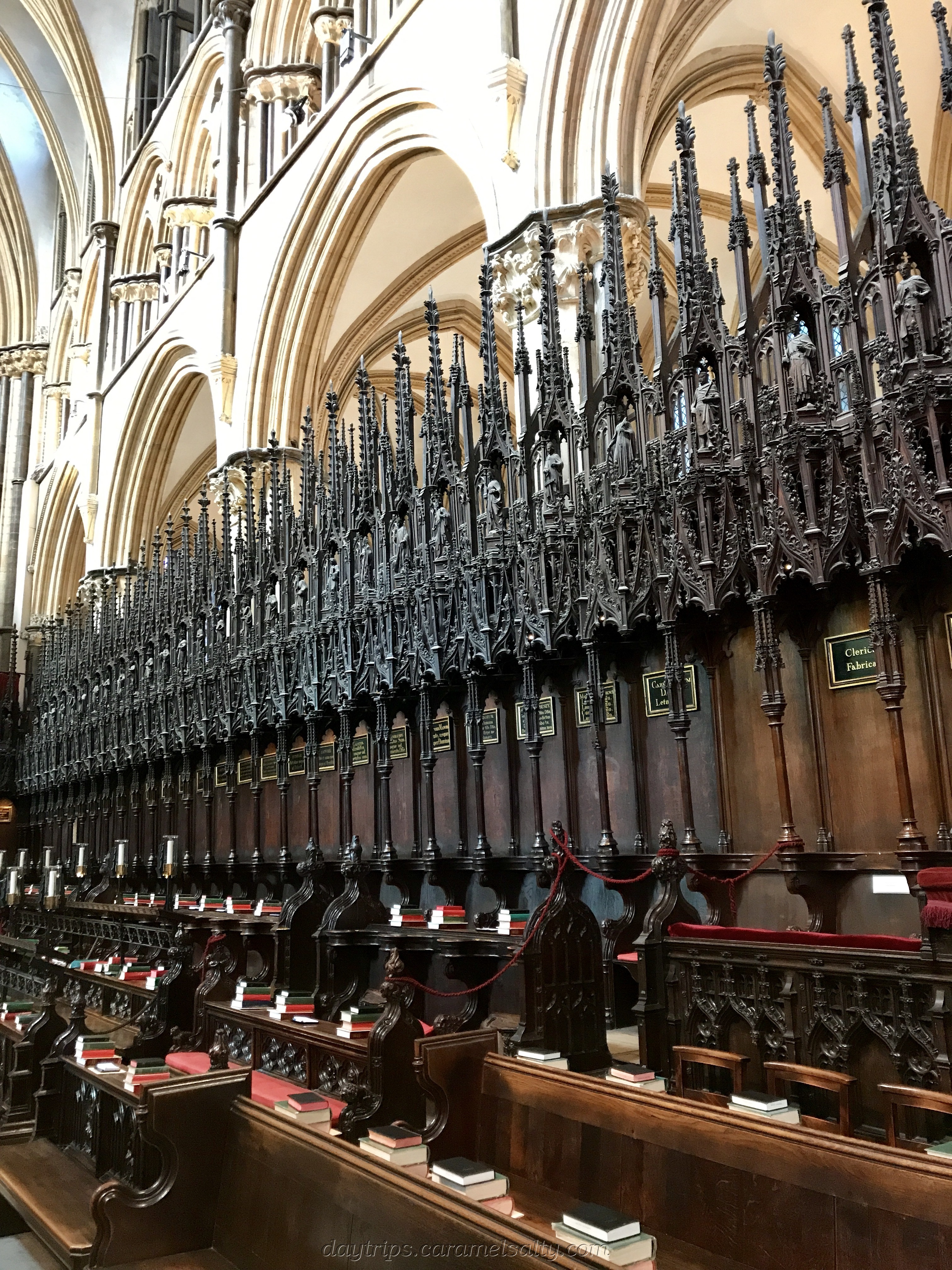 expedition, to which he is said to have contributed a ship and twenty armed men, was responsible for building the cathedral. Remigius, was preparing to erect a cathedral at Dorchester, but was ordered to build the see in Lincoln. He actually died 4 days before the cathedral was consecrated. He is remembered in the stained glass at the western front, which you can get close up to on the Roof To
expedition, to which he is said to have contributed a ship and twenty armed men, was responsible for building the cathedral. Remigius, was preparing to erect a cathedral at Dorchester, but was ordered to build the see in Lincoln. He actually died 4 days before the cathedral was consecrated. He is remembered in the stained glass at the western front, which you can get close up to on the Roof To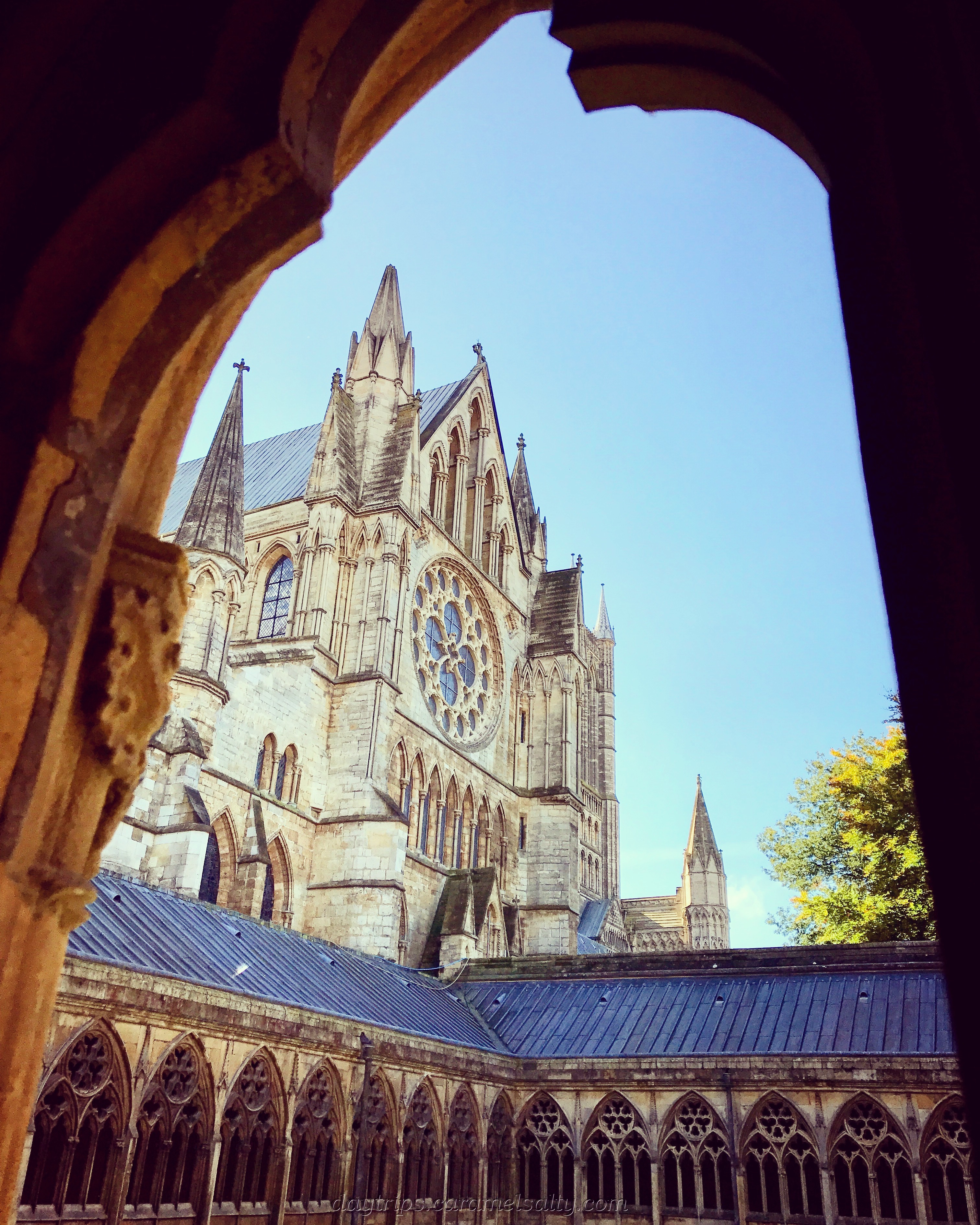 ur.
ur.
High above the Lincoln Cathedral cloisters are the Medieval Library and Wren Libraries, a 15th century collection of books in “the most beautiful room in England”. Check the website for the restricted times.A memorial statue of Lord Tennyson (born in Lincolnshire in 1809 and who was Poet Laureate from 1850 to 1892) can be found on the East Green of Lincoln Cathedral bearing the words of his poem Flower in the Crannied Wall.
Next I visit Lincoln Castle. During Norman times, Lincoln was the third most important city in England and was therefore the location for one of the first castles to be built by William the Conqueror in 1068 on the site of a Roman fortress. As you go through the archway entrance, you will see an ivy clad building that is the Crown Court (still in use).
The buildings to the left of the entrance are the Victorian prisons, 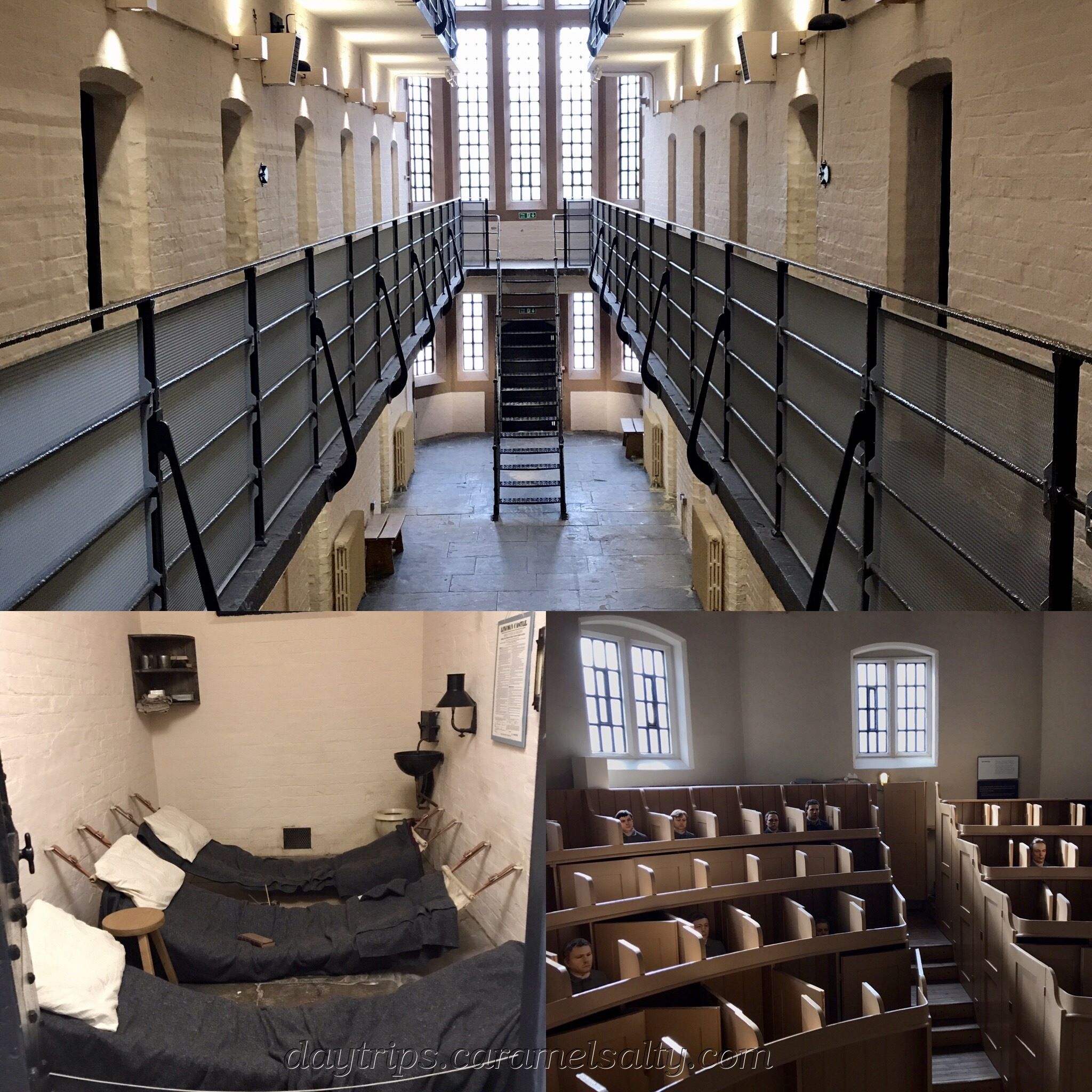 built in 1787 and extended in 1847. They were my favourite part of the castle. The prisons were designed to isolate prisoners. Do visit the chapel to see how even during prayer, the prisoners were s
built in 1787 and extended in 1847. They were my favourite part of the castle. The prisons were designed to isolate prisoners. Do visit the chapel to see how even during prayer, the prisoners were s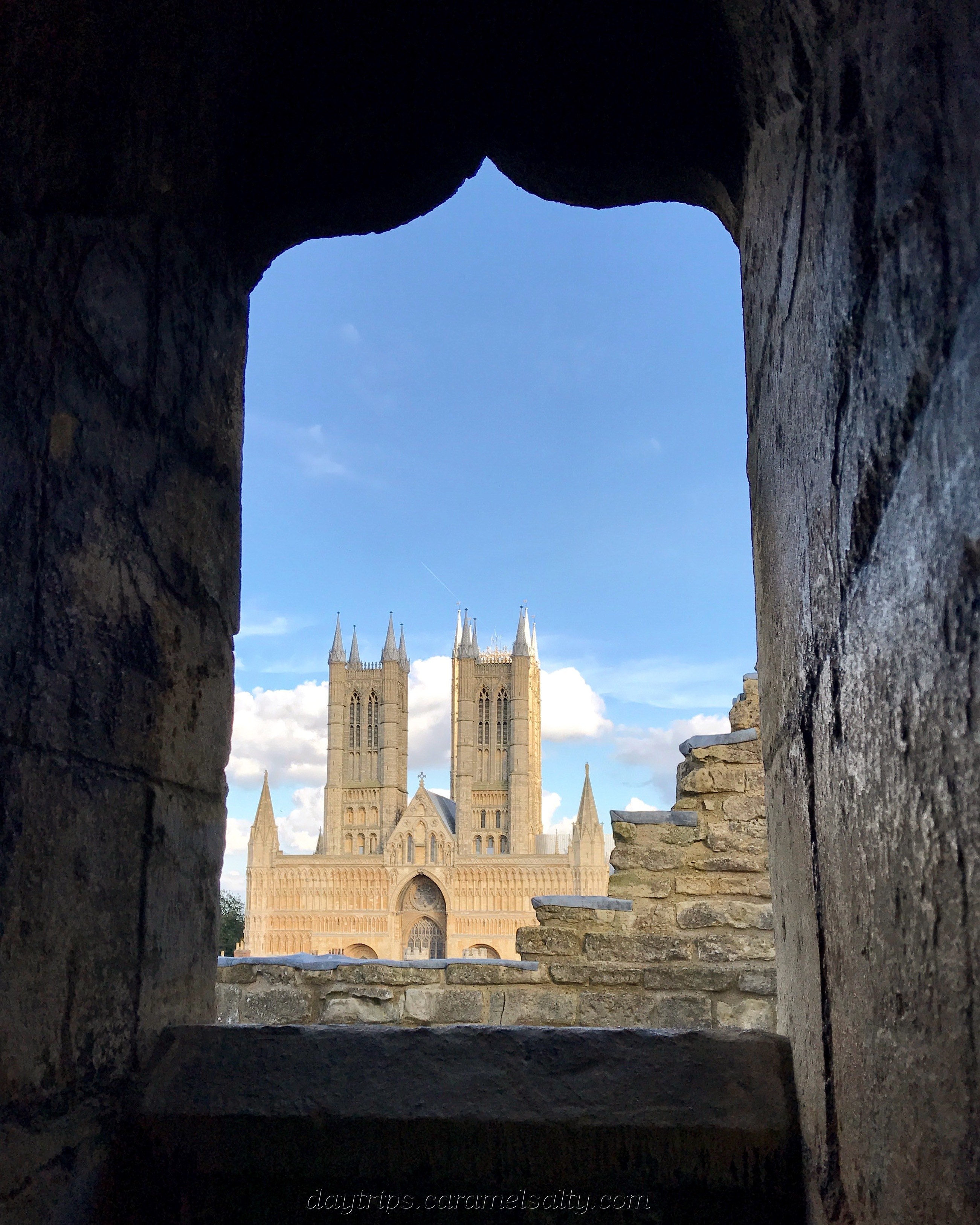 till kept apart.
till kept apart.
You can walk round the towers and the walls of the castle. There is an interesting free audio guide with the walk. Highlights of the audio guide was the narrative on the Battle of Lincoln in 121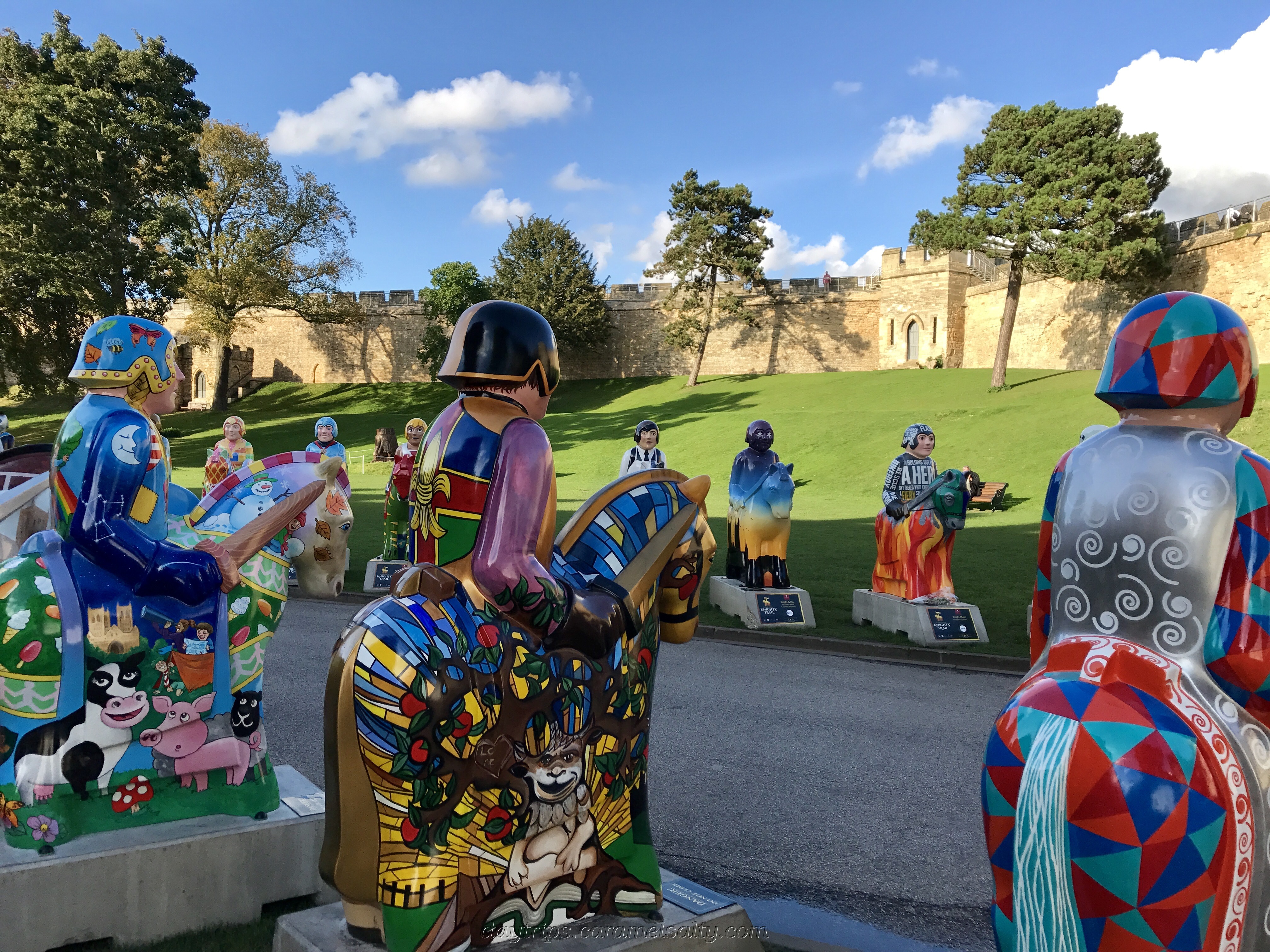 7, which was a decisive battle in the Baron’s War which was a result of the Baron’s invitation to King Louis VIII to be King of England when King John reneged on the Magna Carta. And as my visit coincides with the anniversary of this battle, the painted knights which are to be auctioned off for charity are on display in the castle gardens. Also fascinating is the history of executions at Cobb Hall .
7, which was a decisive battle in the Baron’s War which was a result of the Baron’s invitation to King Louis VIII to be King of England when King John reneged on the Magna Carta. And as my visit coincides with the anniversary of this battle, the painted knights which are to be auctioned off for charity are on display in the castle gardens. Also fascinating is the history of executions at Cobb Hall .
One the four surviving Magna Carta, sealed by King John in Runnymede in 1215 can be found here, as can the 1217 Charter of the Forest. Whilst the Magna Carta benefitted the Barons, it was the Charter of the Forest that actually impacted the ordinary people. The charter allowed all men free access to the royal forests, which covered about a third of Britain at that time. Prior to that they were unable to collect wood and to forage without Royal permission.
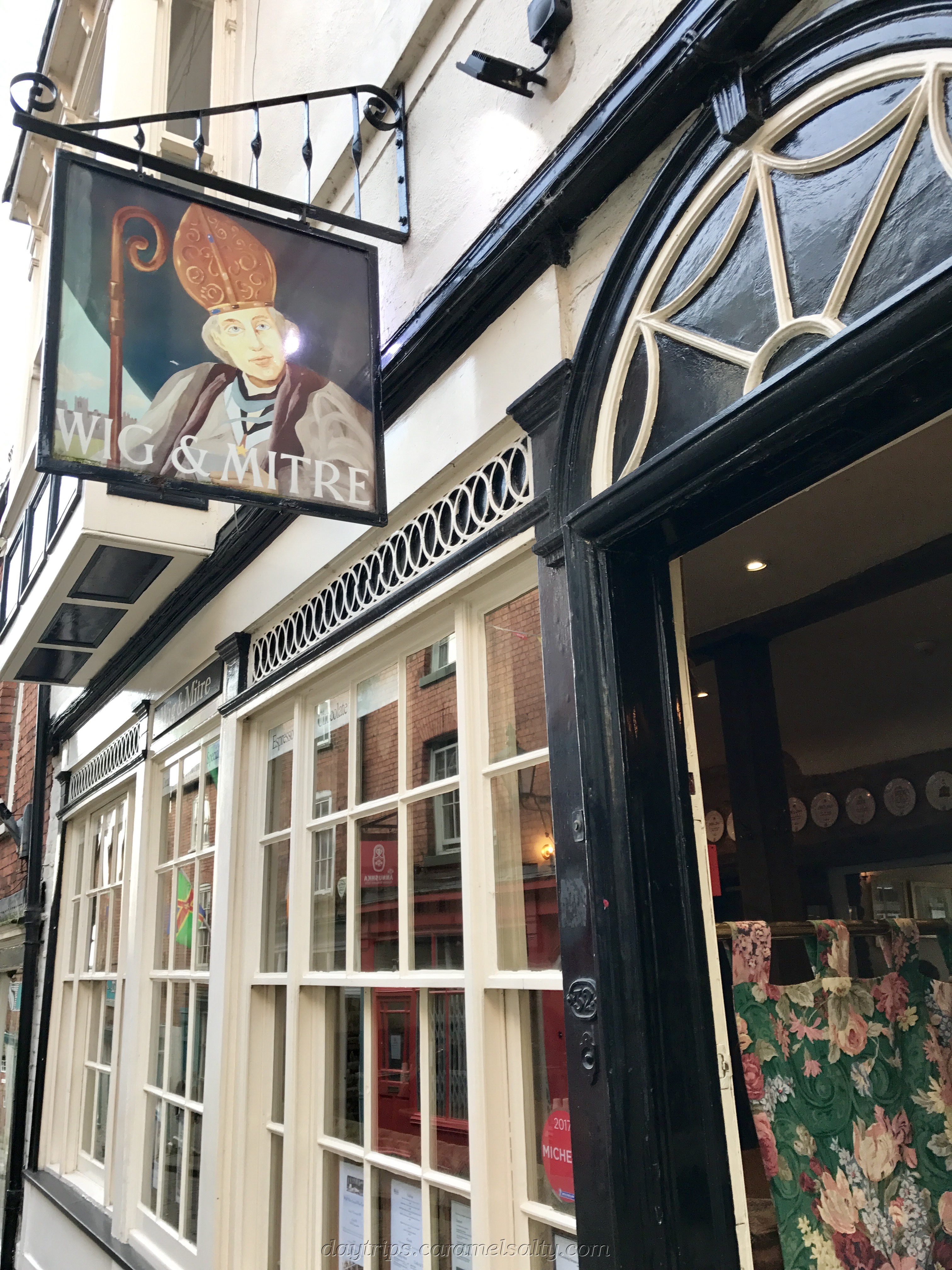 It has been a full day, so I am ready for dinner, which is at the Wig and Mitre. My plans for the next day is a relaxing day of browsing in the shops, visiting the St Mary Magdalene church and dropping in into the Usher Gallery, which is Lincoln’s premier art gallery. It is just off Dane’s Terrace, backing onto the serene Temple Gardens. It also has a few paintings of Lincoln in yesteryears as well as a painting of Lincoln by Lowry. It a
It has been a full day, so I am ready for dinner, which is at the Wig and Mitre. My plans for the next day is a relaxing day of browsing in the shops, visiting the St Mary Magdalene church and dropping in into the Usher Gallery, which is Lincoln’s premier art gallery. It is just off Dane’s Terrace, backing onto the serene Temple Gardens. It also has a few paintings of Lincoln in yesteryears as well as a painting of Lincoln by Lowry. It a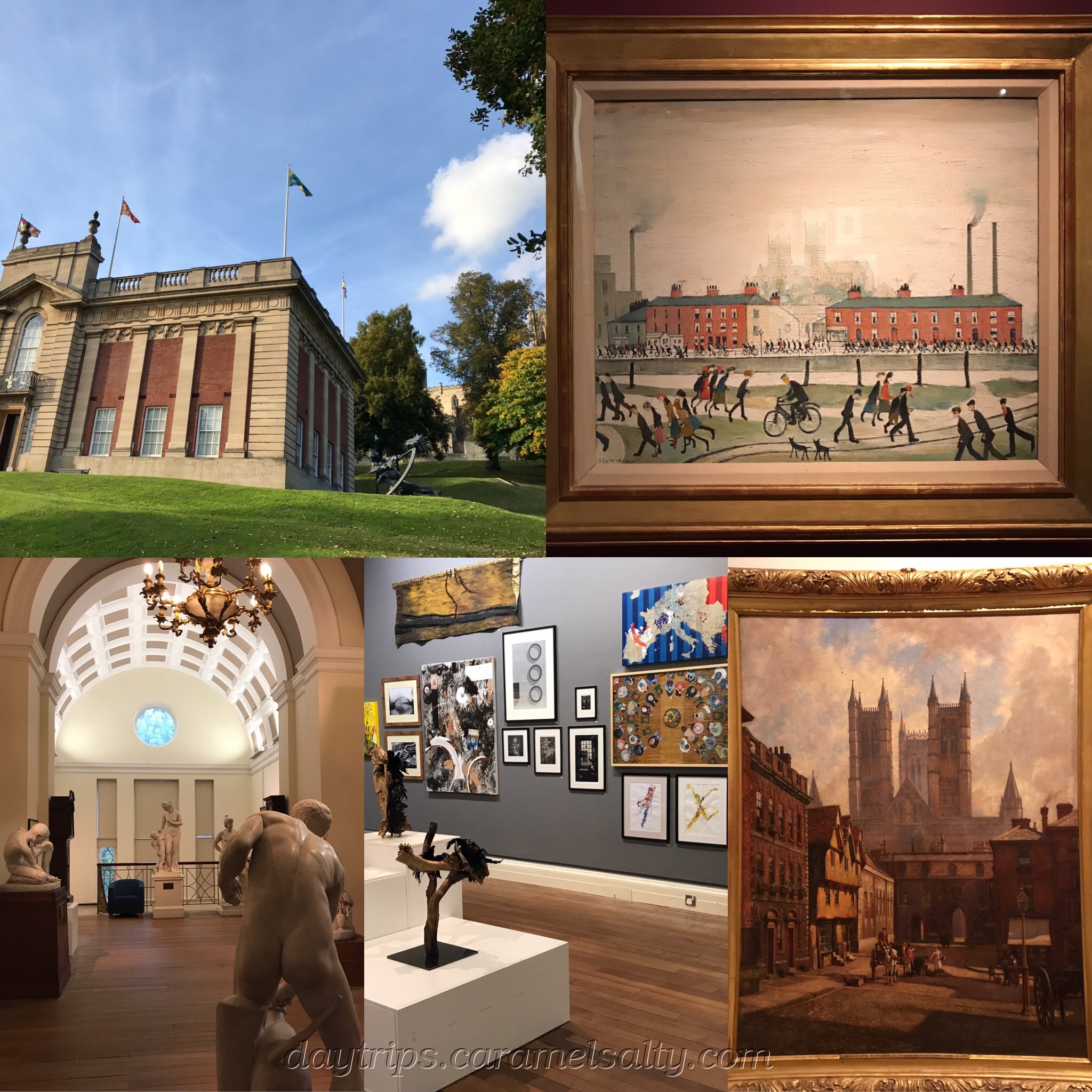 lso houses contemporary art by local artistes. There is also an Archaelogical Museum in a modern building adjacent to the Usher Gallery. Together, both museums are known as The Collection.
lso houses contemporary art by local artistes. There is also an Archaelogical Museum in a modern building adjacent to the Usher Gallery. Together, both museums are known as The Collection.
All in all, I spent a delightful 30 hours in Lincoln. You could at a push, do this as a day trip from London, in the summer. But there is plenty to fill your time, including a Ghost Walk (Thursdays to Sundays) and the many walking trails that are available.